

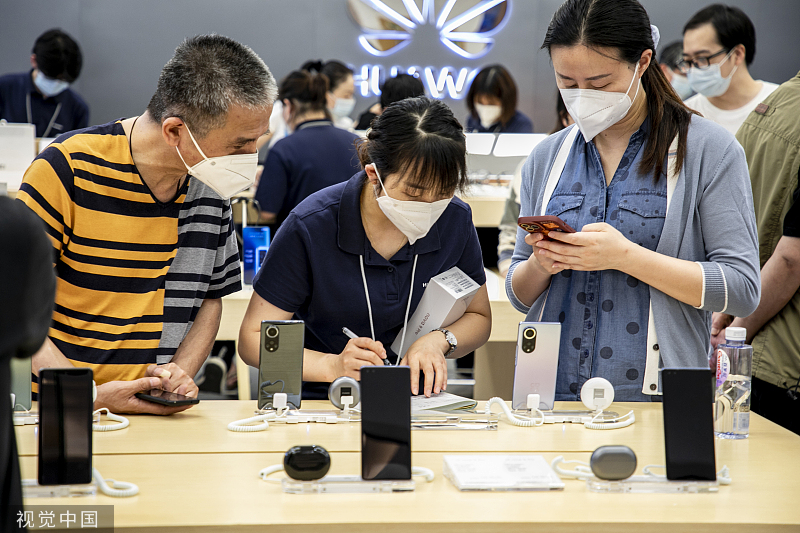
Chinese brands have become increasingly popular among consumers, according to a report on consumption trends by Trendforesee Consulting Co released on its official WeChat account on Monday.
About 79.9 percent of consumers increased their consumption of Chinese brands in 2023, up from 73.3 percent in 2020.
Consumers of all age groups have significantly increased their consumption of Chinese brands in 2023.
Compared with 2020, the increase in consumption of Chinese brands is more prominent among the post-1990 generation, and those born between 2000 and 2005.
The reasons for the increase of Chinese brands consumption include improved quality, higher cost-effectiveness, national tide elements, better understanding of Chinese consumers and cultural confidence as the country gets stronger.
The influence of Chinese brands has been further recognized with consumers' impression of Chinese brands not being limited to cheap, effective and practical in 2020 but now also includes aspects, such as brands that are rich in cultural heritage, have higher cost-effectiveness, include ingenious craftsmanship and are trustworthy in 2023.
The growing influence of leading brands has contributed to consumers' fondness for Chinese brands. Some of the favored Chinese brands nominated by consumers in 2023 include Huawei, Xiaomi, Li-Ning, Anta Sports and Midea.
Diversified innovation of brands has enhanced consumers' trust in Chinese brands. New consumption brands and regional brands have promoted the development of Chinese brands.
The shaping of brand consumption atmosphere has also played an important role in guiding Chinese brand consumption, according to the report formulated based on an online survey by Trendforesee Consulting Co.
The survey was conducted among consumers aged from 18 to 60 in 10 Chinese cities including Beijing, Shanghai, Guangzhou, Chengdu, Wuhan, Nanjing, Xi'an, Xiamen, Shenyang and Kunming in May 2023.
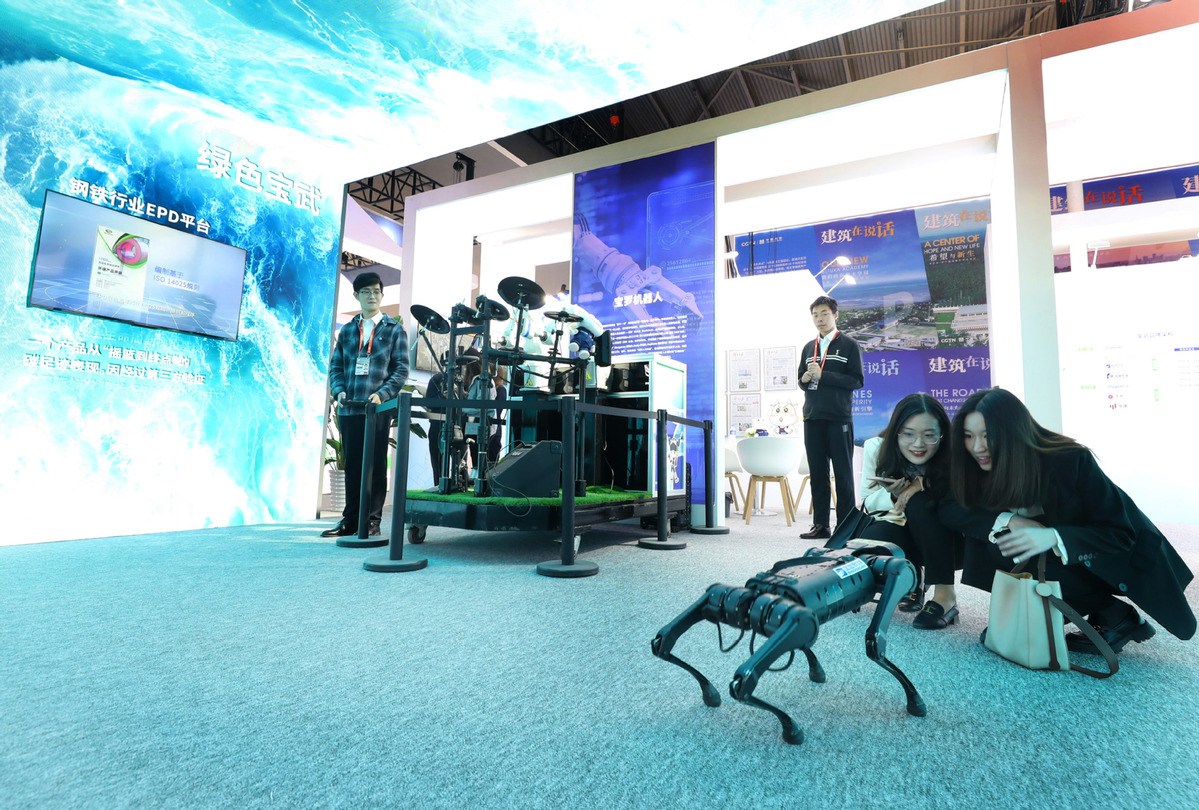
Nearly a thousand of Chinese enterprises showcased and released a large number of new products, technologies and services at the Exposition on China Brand amid the 2023 China Brand Day events in Shanghai from May 10 to 14.
Thirty-eight centrally State-owned enterprises brought their latest products and programs this year, with the number of exhibitors doubled that of 2021, according to a People's Daily report on Monday. More Chinese companies are contributing to the development of the world as the China State Construction Engineering Corp has built more than 2,400 projects in countries and regions alongside the Belt and Road Initiative since 2013.
As the country's civil aviation market is witnessing gradual recovery, Air China is accelerating its global footprint by adopting new cabin interiors and in-flight entertainment equipment.
China's industrial giant CRRC Corp Ltd unveiled its latest hydrogen-powered city train at the exposition. With a 600-km driving mileage, the train is equipped with automated start and stop technology and can reach zero-emission while driving.
Besides high-tech brands, this year's exposition also launched a special zone for rural vitalization, with 93 agricultural brands showcased, attracting a large number of visitors.
According to Zheng Shanjie, director of the National Development and Reform Commission, the country will accelerate building an innovation system, strengthening intellectual property protection, and fostering world-class enterprises with outstanding products and brands.
Based on the platform of China International Import Expo, Shanghai is accelerating in building itself as an international consumption center and attracting more domestic and overseas brands. The city will continue to strengthen brand protection, build professional service platforms for brands and assist more Chinese brands in entering the world market, according to the report.
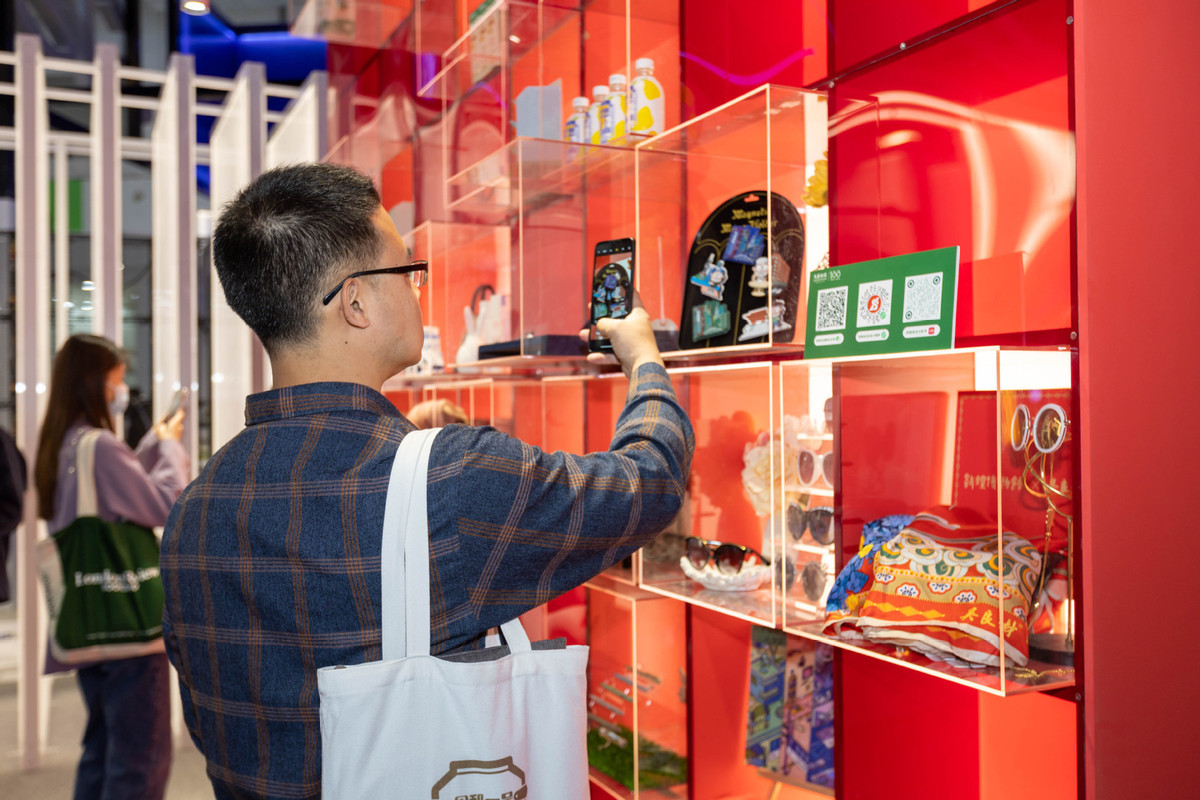
SHANGHAI -- Chinese Vice Premier Ding Xuexiang on Saturday called for solid efforts to strengthen the country's brand building.
Ding, also a member of the Standing Committee of the Political Bureau of the Communist Party of China Central Committee, made the remarks when delivering a speech at the International Forum on China Brand Development, part of the ongoing 2023 China Brand Day events in Shanghai.
China has rolled out a series of measures on brand cultivation and development and has built the country's own well-known brands, with Chinese brands constantly gaining popularity, reputation and influence, Ding said.
He urged improving brand cultivation and development mechanism, encouraging enterprises to incorporate elements related to Chinese culture into brand building and strictly cracking down on illegal activities such as trademark infringement, among other measures.
Efforts should also be made to improve international rules and standards on brand-related intellectual property rights, facilitate communication on brand building, and promote the development of brands globally, the vice premier said.
Prior to attending the forum, Ding visited an exposition on brand development and communicated with exhibitors.
The 2023 China Brand Day events kicked off in Shanghai on Wednesday and will run until May 14.
The events are jointly held by the National Development and Reform Commission, the Ministry of Industry and Information Technology, the Ministry of Agriculture and Rural Affairs, and several other government organs.
The world's first hydrogen-powered urban train was on public display at China Brand Day, which kicked off on Wednesday in Shanghai.
The train, which was developed by the CRRC Changchun Railway Vehicles Co, consists of four carriages and is designed for a maximum speed of 160 kilometers per hour. The hydrogen-powered system can provide a strong and lasting power source for the train and achieves a driving range of 600 km.
The train also adopted the most advanced automatic driving technology, including automatic wake-up, automatic start/stop and return to the depot.
A vehicle-to-vehicle communication system optimizes the train control process and can greatly improve operating efficiency and safety.
Designers used a 5G vehicle-to-ground communication technology and big data analytics to evaluate the running train and ensure its safety.
An interior intelligent lighting system automatically adjusts brightness, depending on the outside environment.
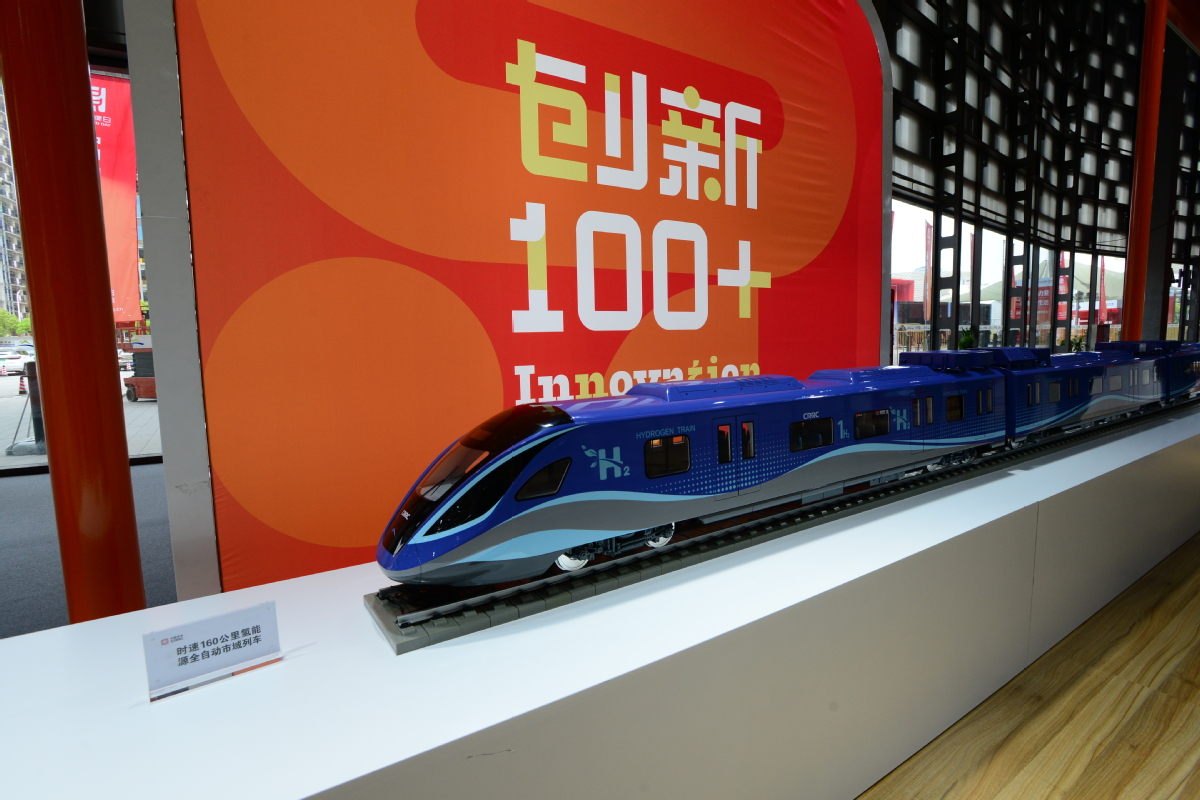
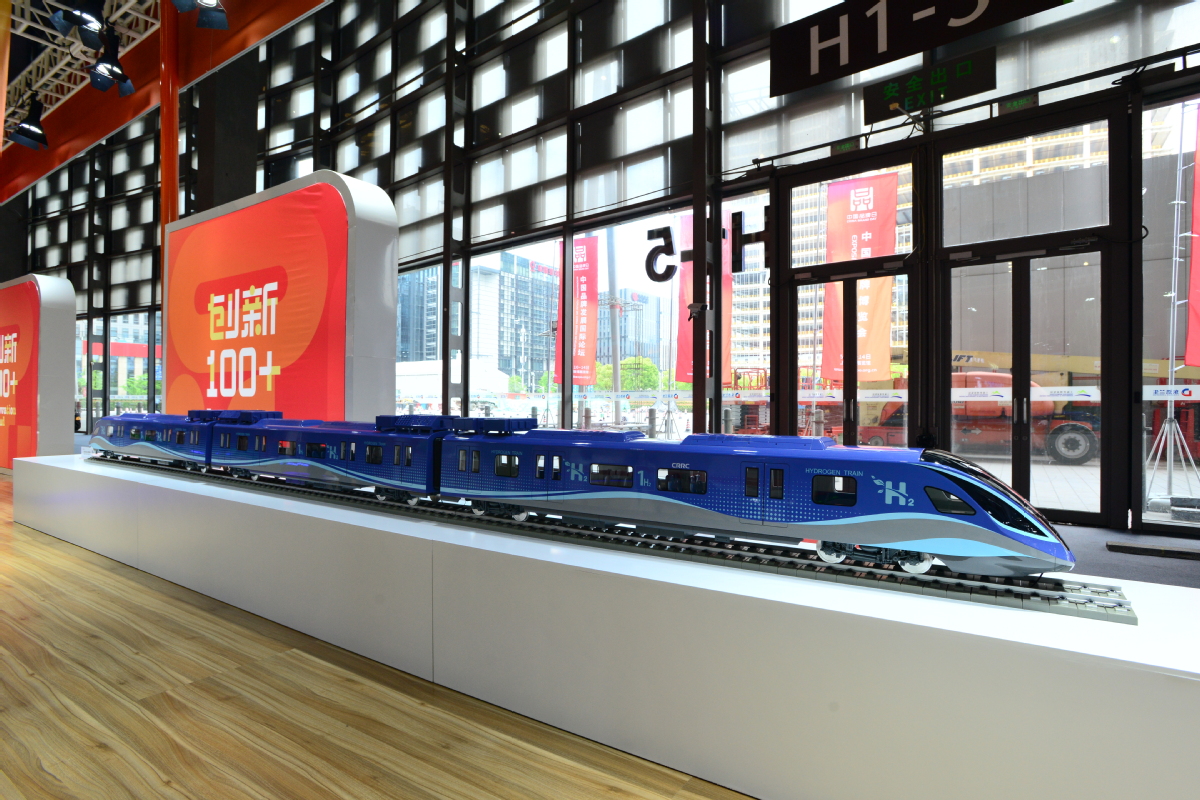
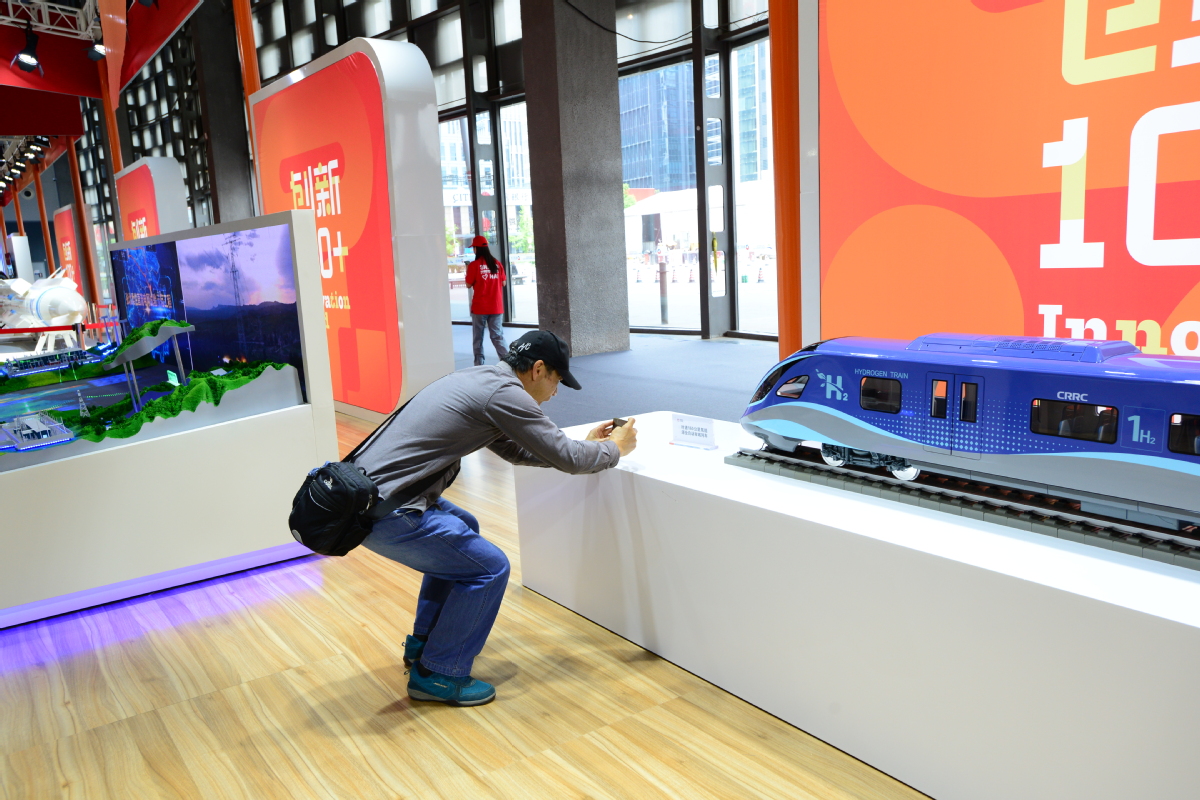
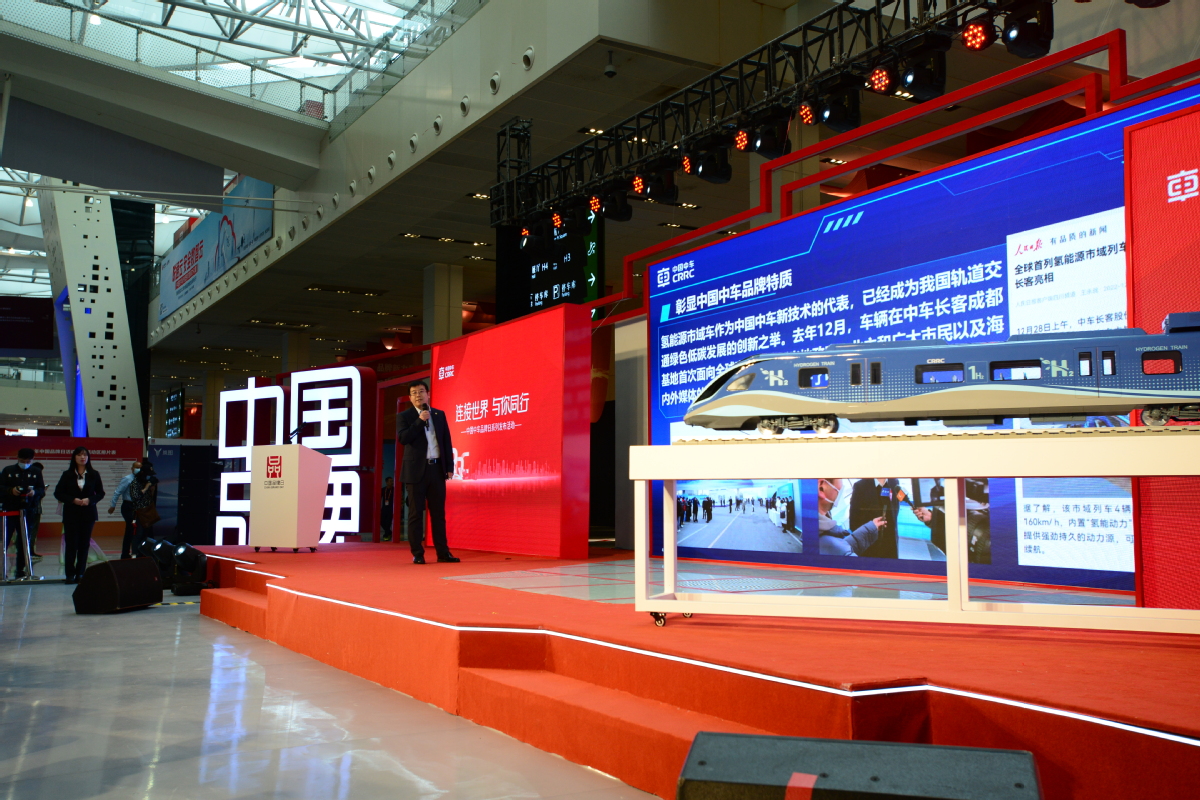
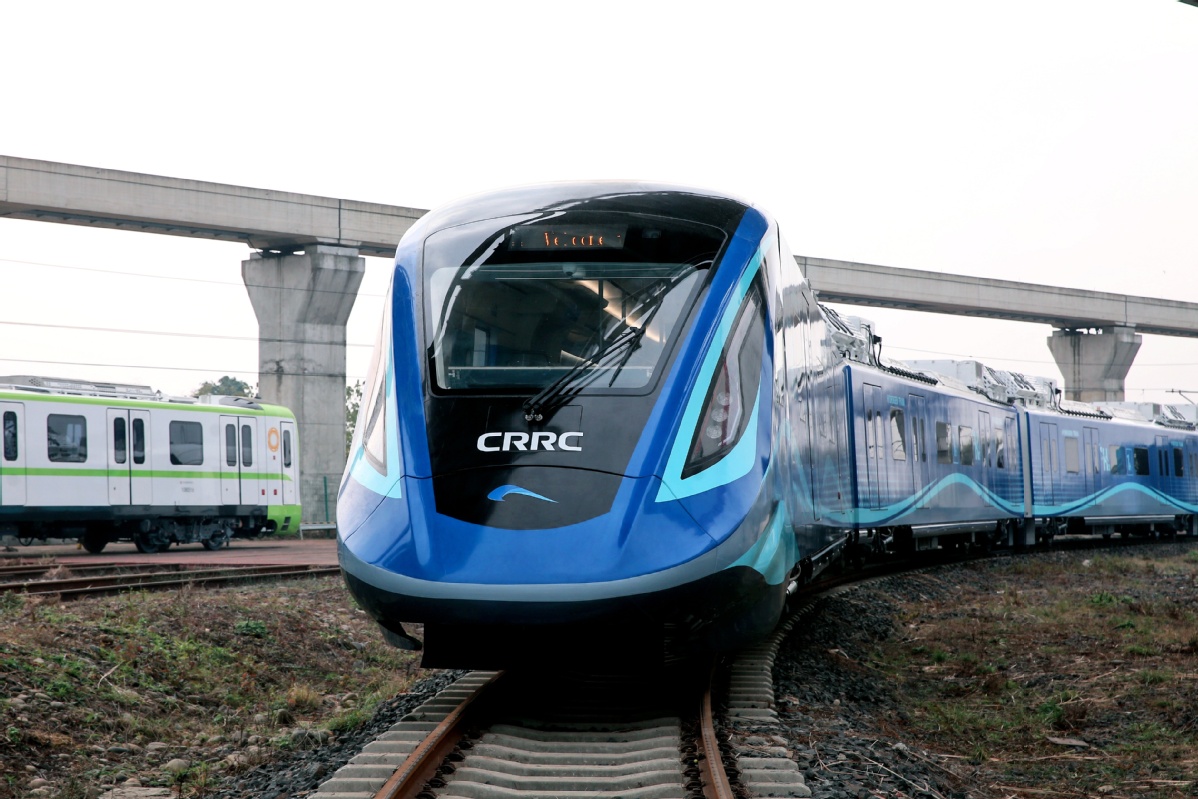
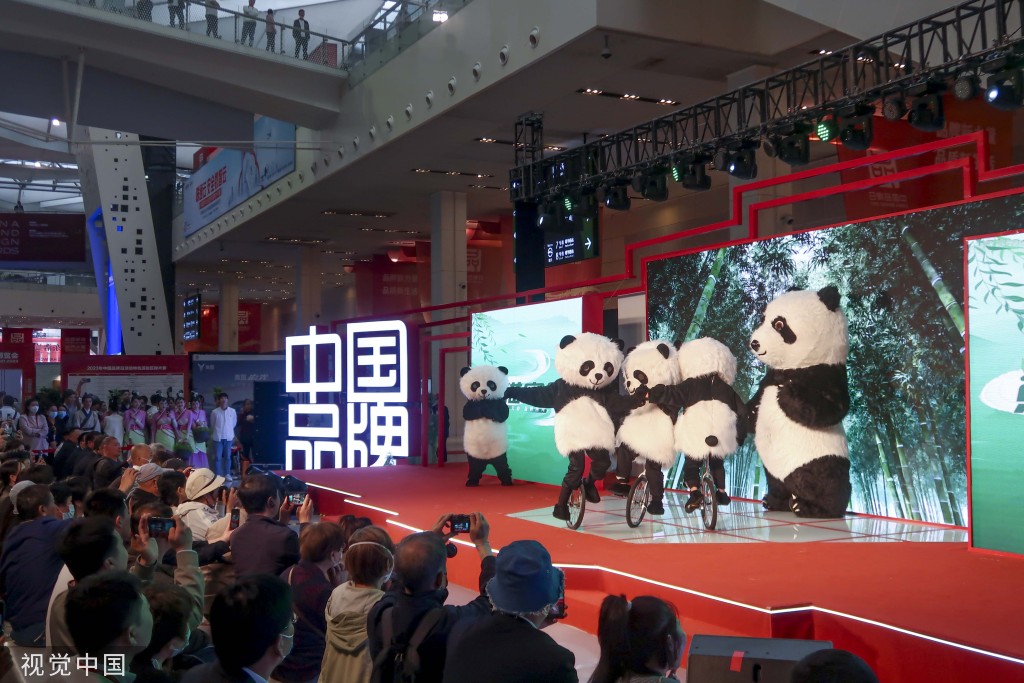
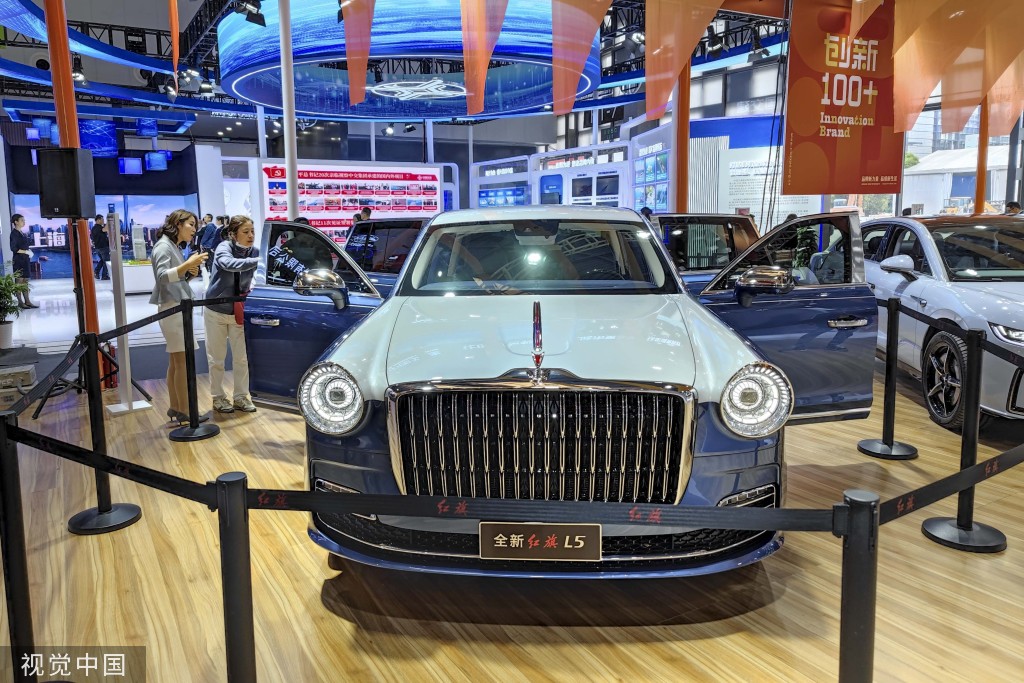
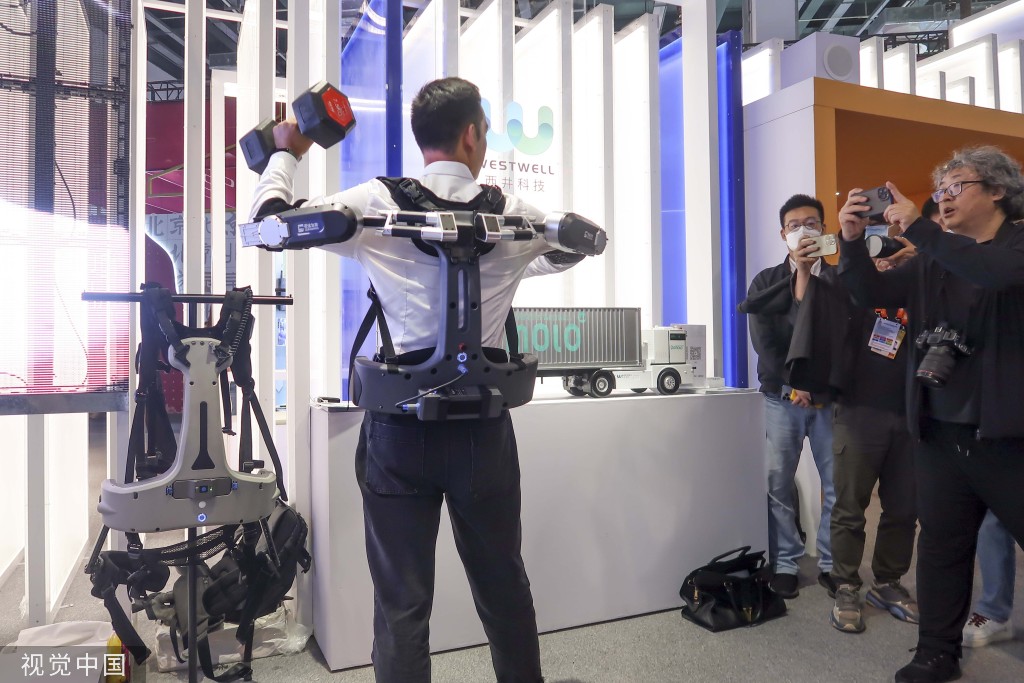
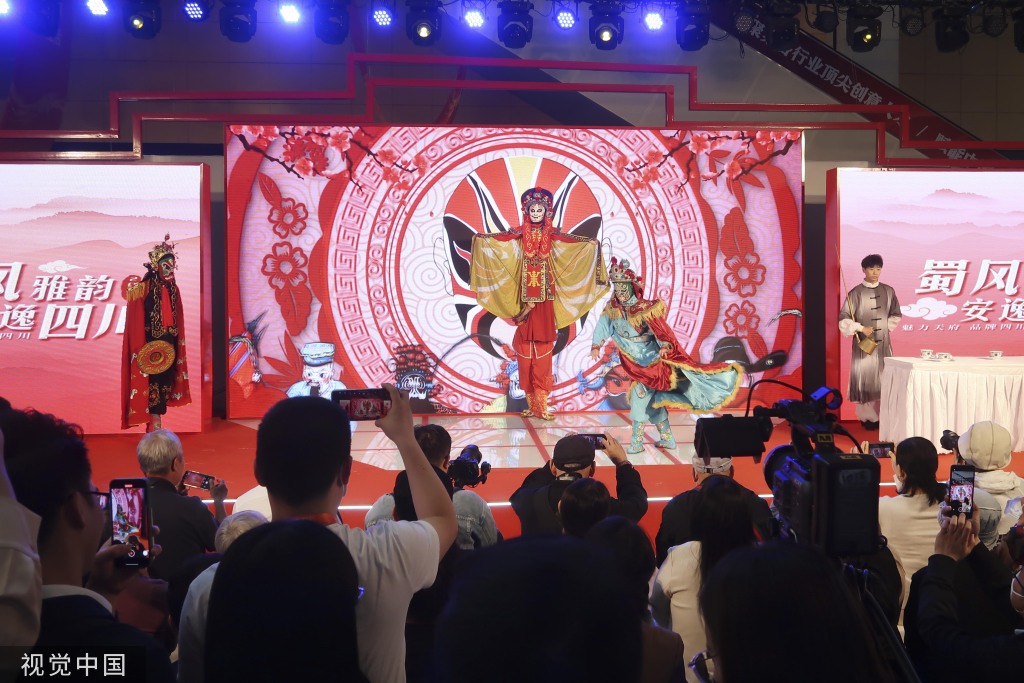
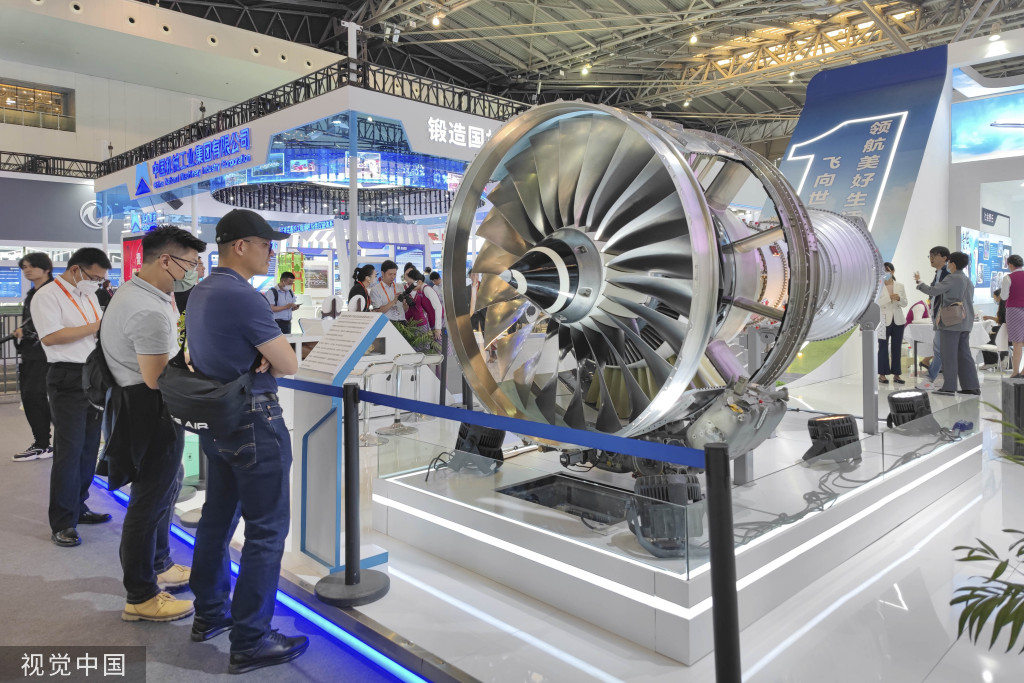
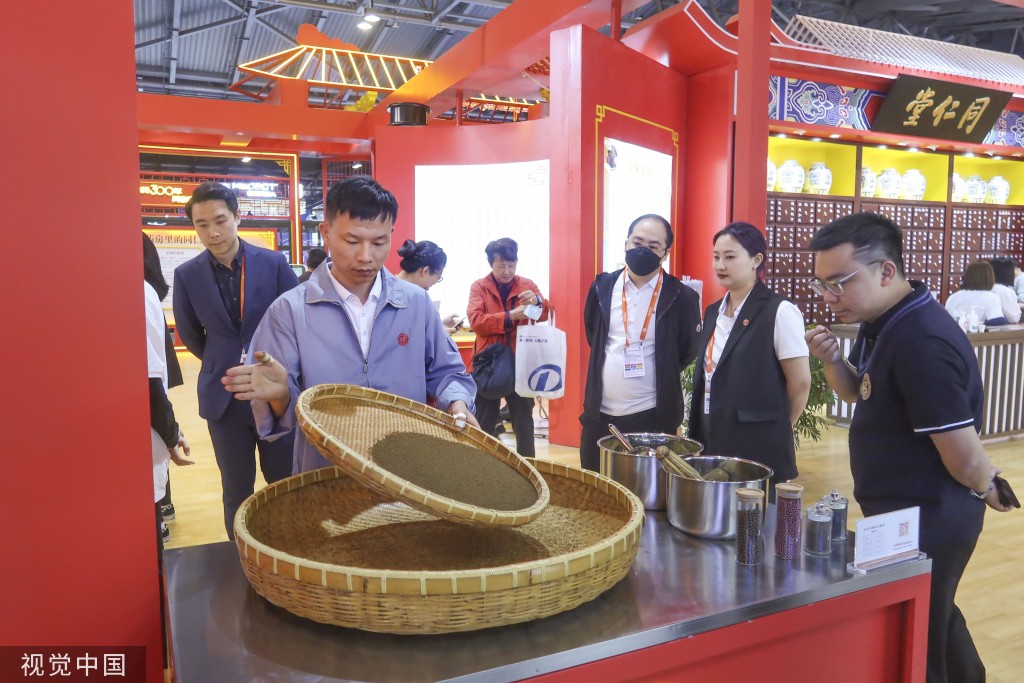
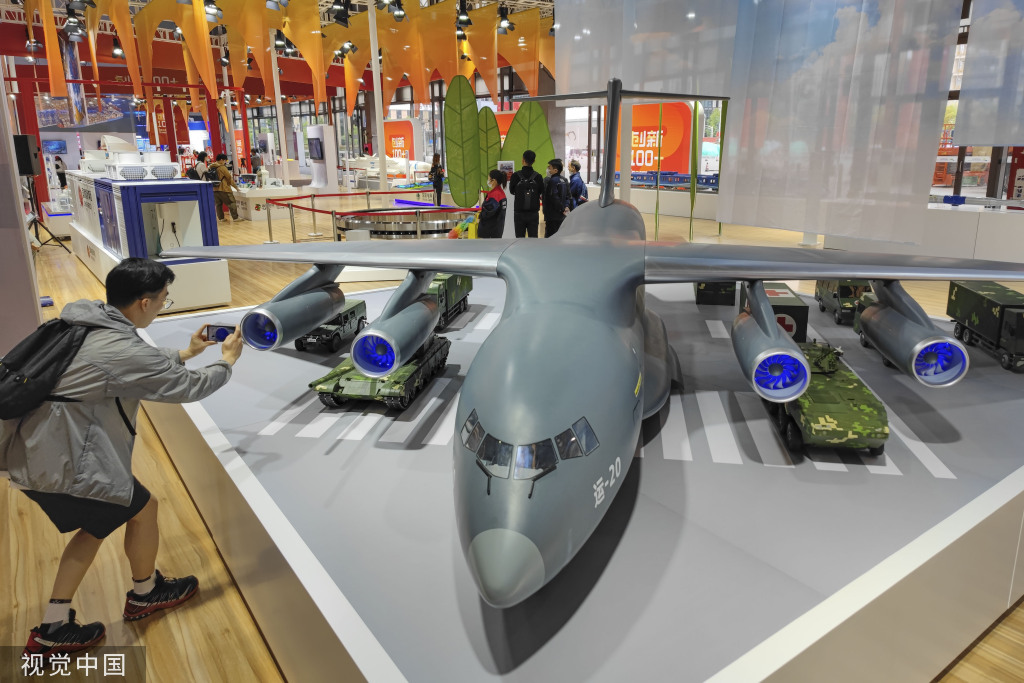
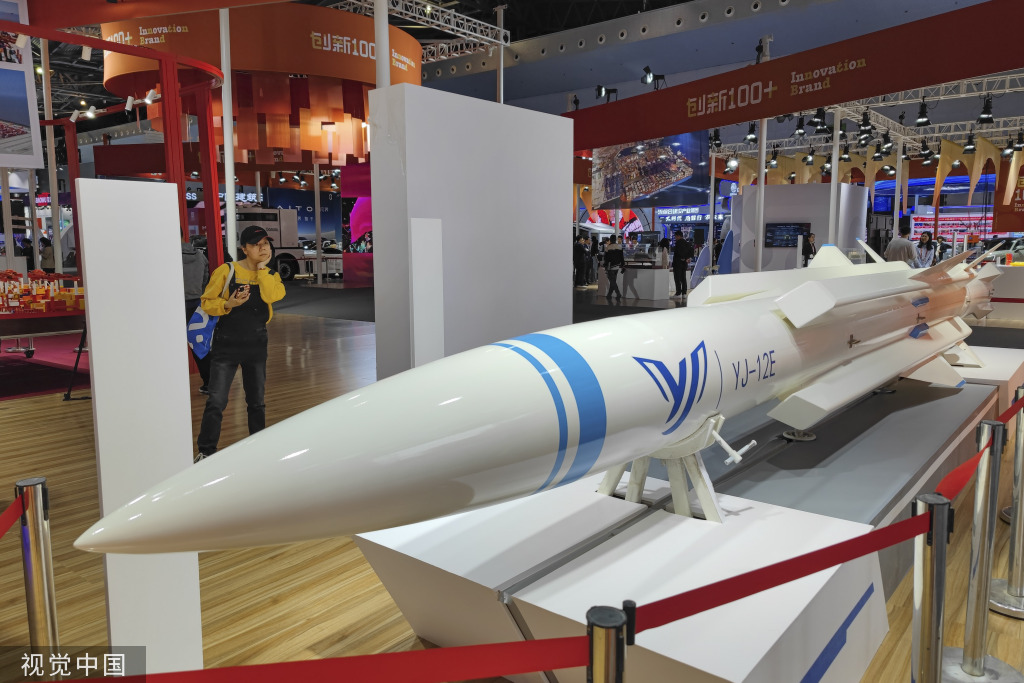
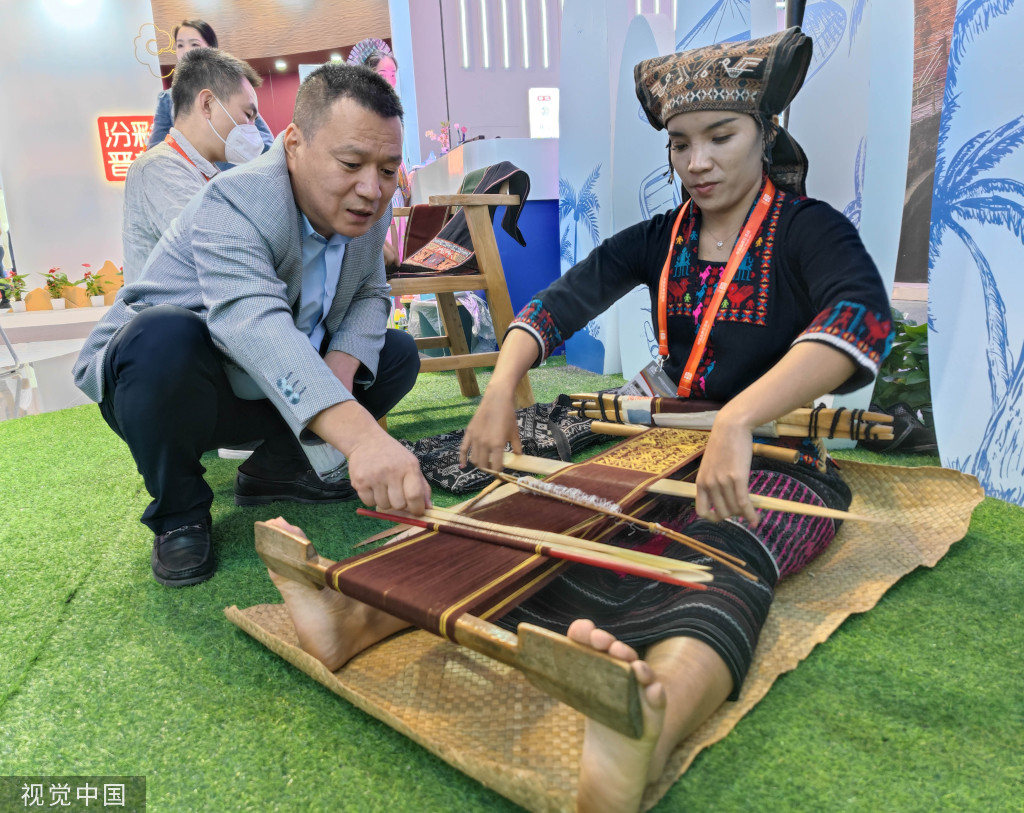
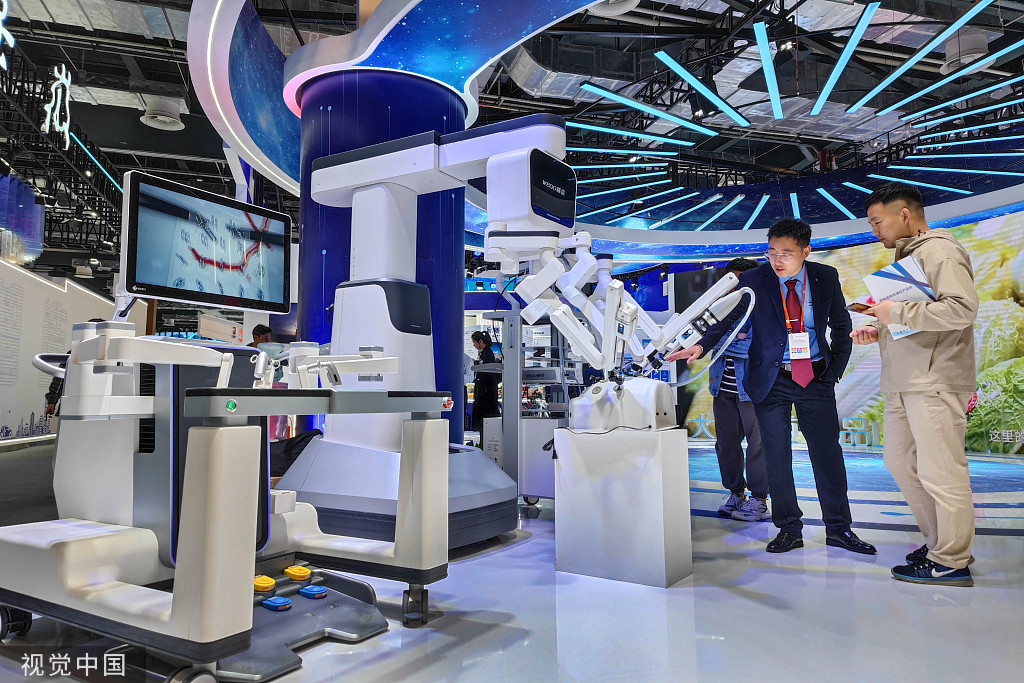

The final list of foreigners' favorite Chinese brands was unveiled in Shanghai on Wednesday, also known as the China Brand Day.
A total of 50 Chinese brands including COSCO Shipping, CRRC, Alibaba and Bank of China, are on the final list, based on an online poll among overseas consumers.
These brands cover 10 categories such as transportation logistics, engineering machinery, auto accessories, household appliances, consumption electrics, internet services, healthcare, food and beverage.
Established in 2017, the China Brand Day lands on May 10 every year, and aims to arouse society's awareness on brand development and create a sound atmosphere for brand building.
This year's China Brand Day events kicked off in Shanghai on Wednesday and will run until May 14, comprising of an international forum and an exposition on China's brand development.
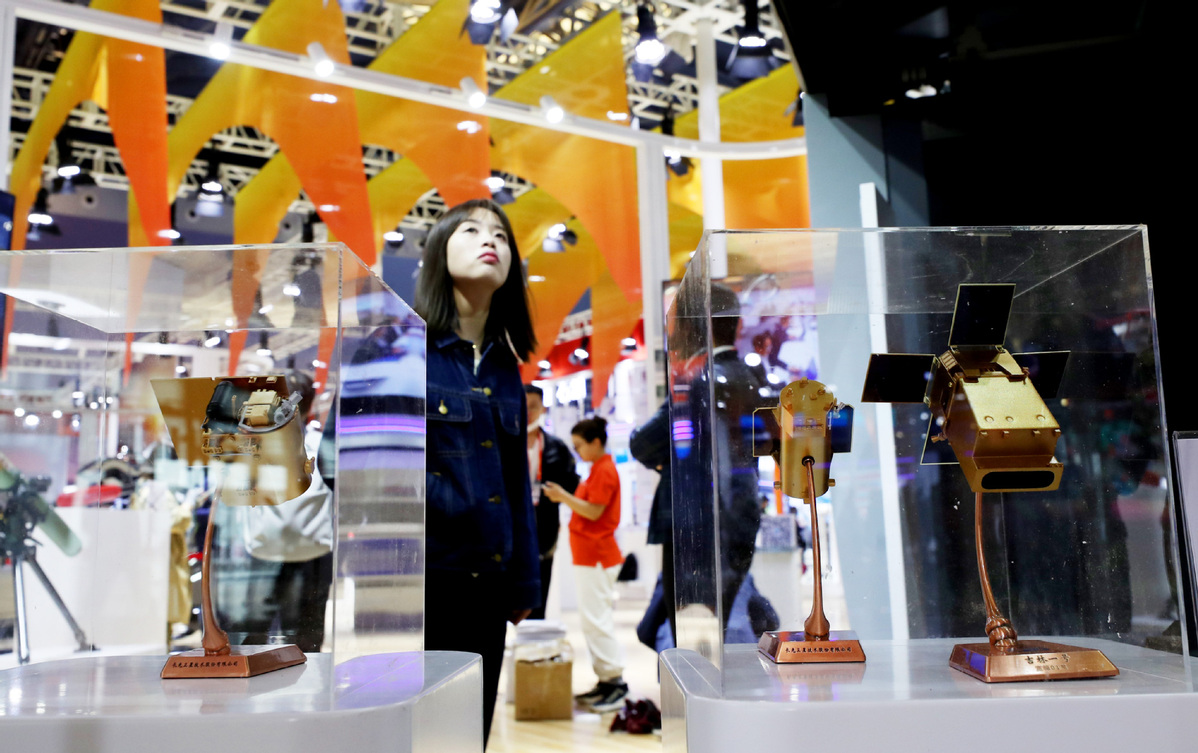
The 2023 China Brand Day events kicked off in Shanghai on Wednesday as the country seeks to develop its brand building, according to a Xinhua report.
The events, which will run until May 14, comprise an international forum and an exposition on China's brand development.
The exposition is being held both online and offline. The offline segment covers an area of nearly 60,000 square meters.
This year's events also comprise a special exhibition zone, showing China's achievements empowered by brand building in terms of modern agriculture, quality services and digital economy, among others.
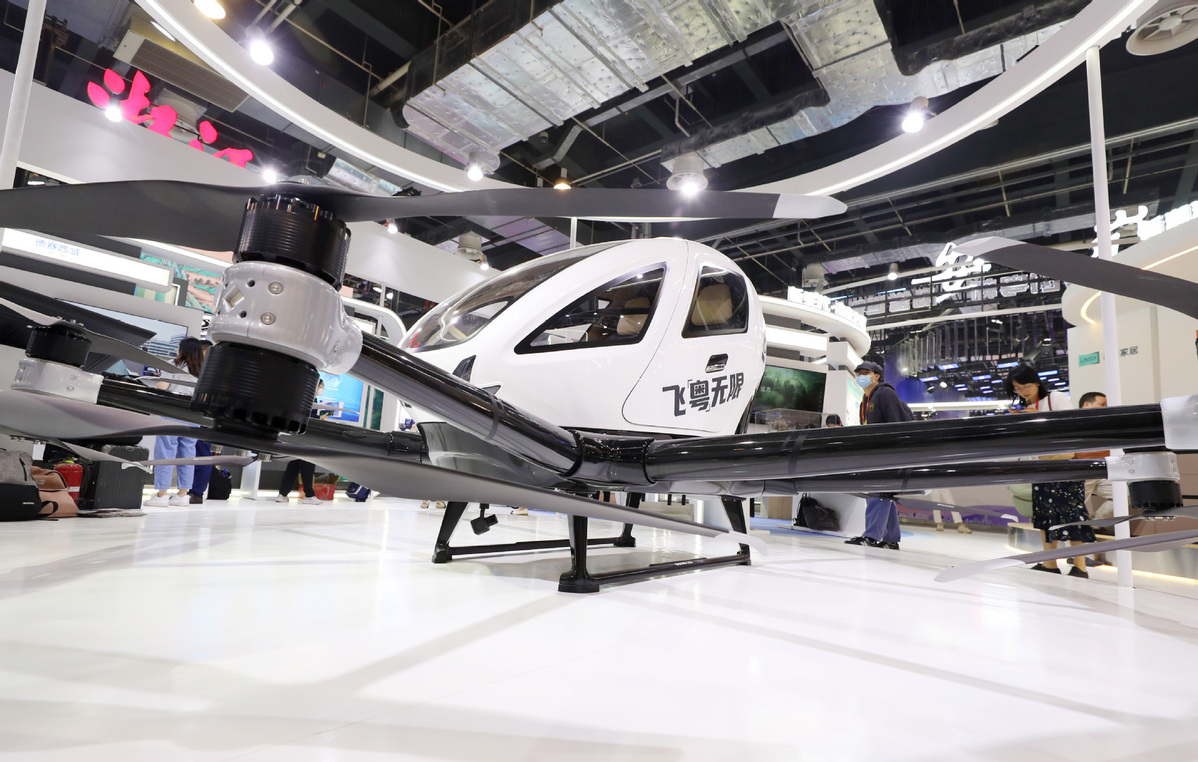
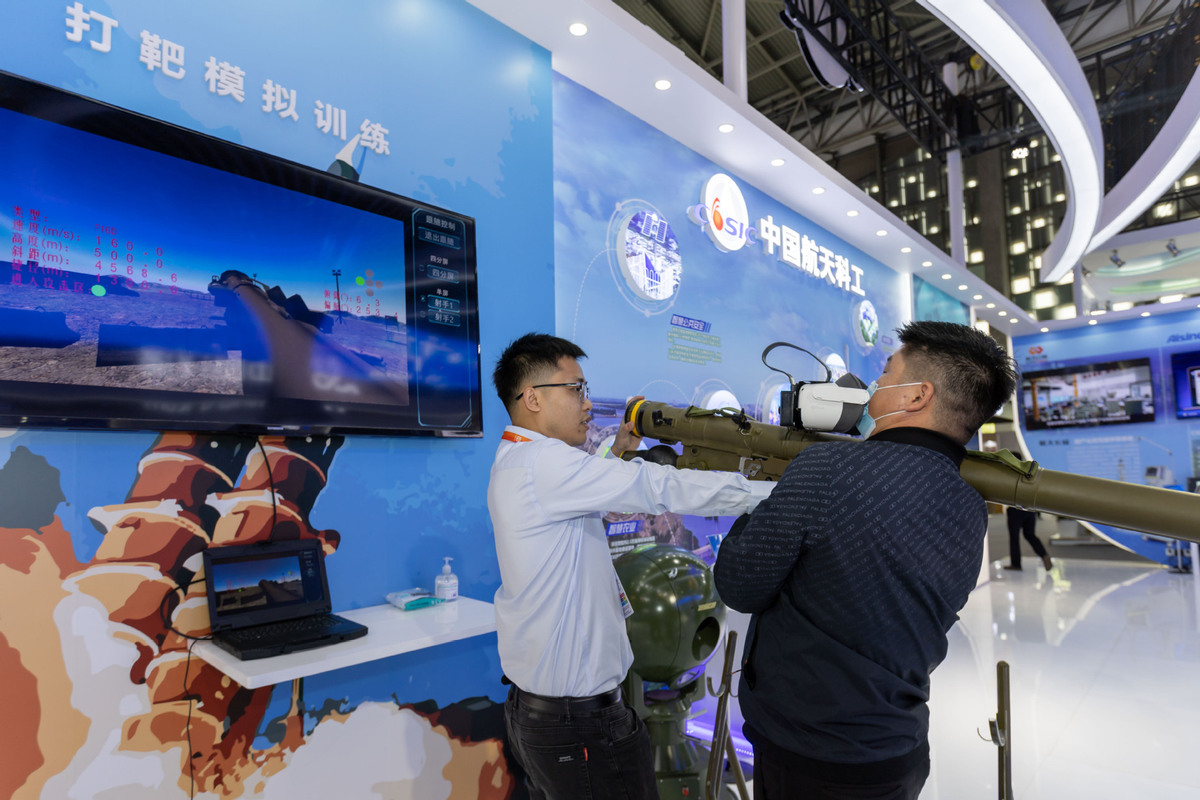
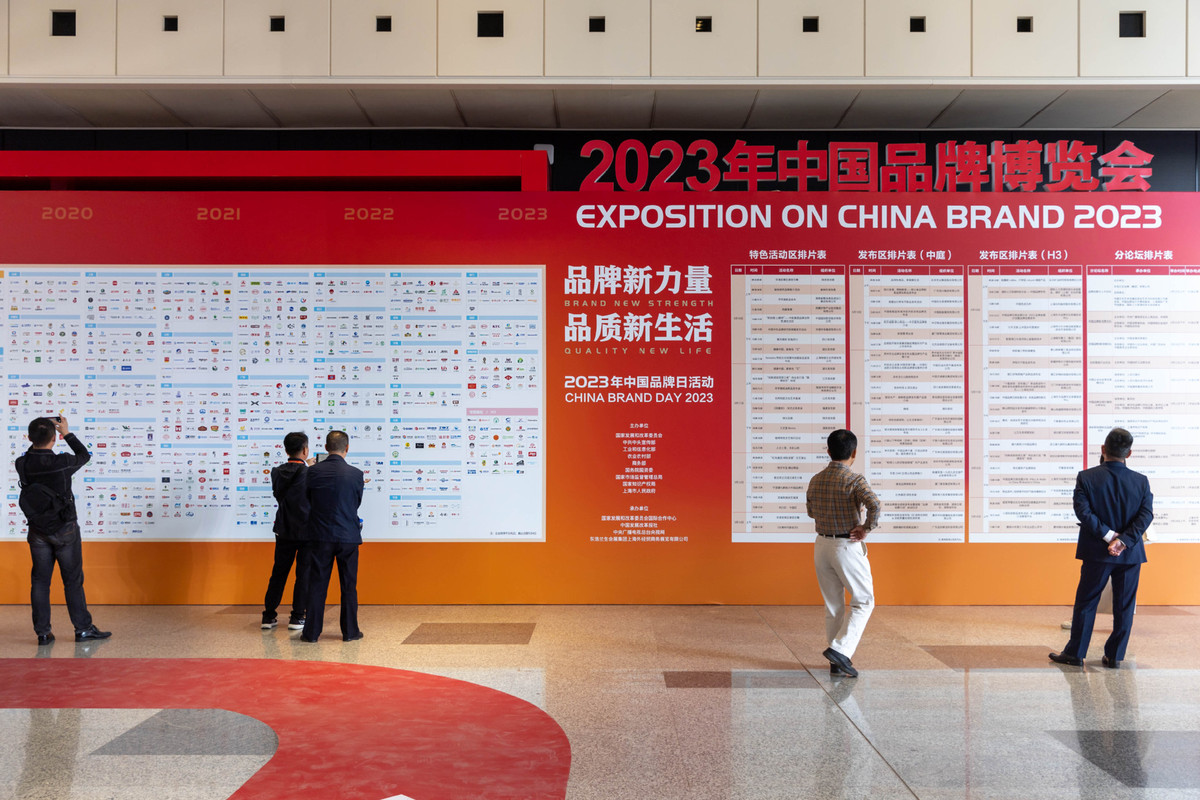
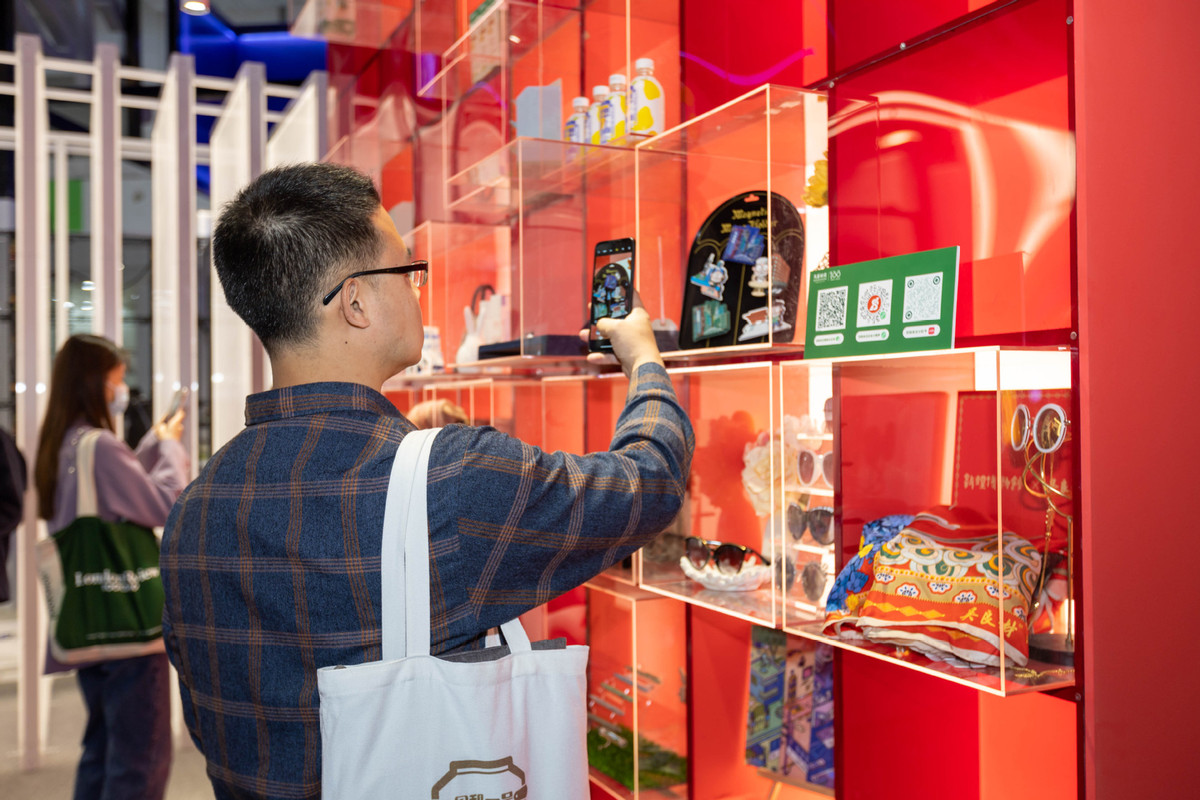
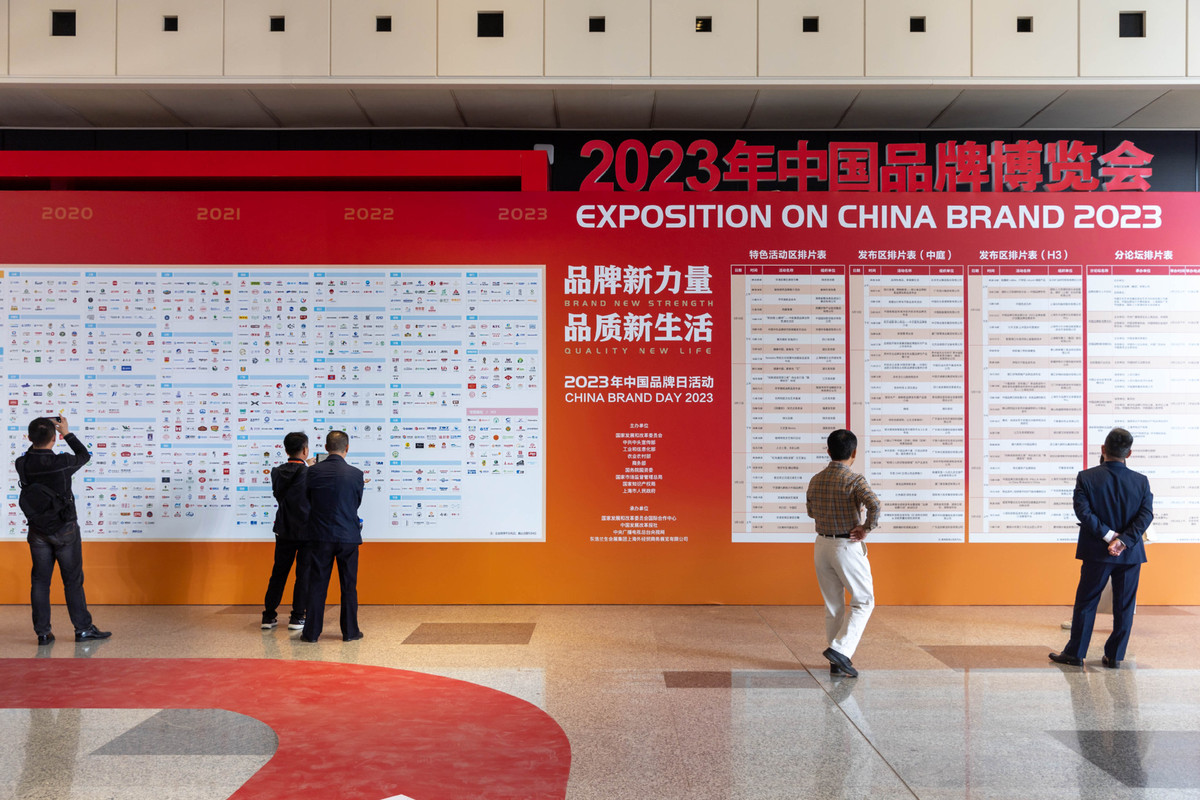
More than 1,000 innovative Chinese enterprises, and those with self-owned brands, exhibited their products and solutions at an event in Shanghai marking 2023 China Brand Day from Wednesday through Sunday.
As a key event of 2023 China Brand Day, which falls on Wednesday this year, the exhibition held at the Shanghai World Expo Exhibition and Convention Center is aimed at showcasing the "new look of current Chinese brands to the world", organizers of the event said.
This year marks the seventh China Brand Day. The exhibition area of nearly 60,000 square meters is more than double that of previous years and the event's duration has been prolonged.
New exhibition sections for selected exhibits and themed products were added and new activities, including new product launches and brand design contests, were put on the schedule this year.
Altogether 38 centrally administered State-owned enterprises exhibited products, representing the country's cutting-edge manufacturing.
Key exhibits include the first domestically produced large-diameter hard rock tunnel-boring machine functioning at high altitudes and in extremely cold environments by China Railway Group Ltd, and a high-speed maglev transportation system capable of traveling at 600 kilometers per hour, of which CRRC Corp Ltd holds full independent intellectual property rights.
Within the exhibition zone specifically for Shanghai enterprises, dozens of businesses showcased the city's economic vitality in new industries, new impetus and application scenarios.
Shanghai aims to achieve the goal of exceeding 1.5 trillion yuan ($217 billion) in total scale of green and low-carbon, metaverse, and intelligent terminal industries by 2025.
Q-Truck, the world's first fully autonomous, driverless new energy commercial vehicle, was among the key exhibits by Shanghai Westwell Information and Technology Co, a fast-growing enterprise that has earned a reputation for its full-stack intelligent port solutions and driverless container trucks.
The vehicle, independently developed by Westwell, has been put into commercial use in countries including Thailand, the United Arab Emirates, the United Kingdom, Malaysia and Mexico, marking a successful business plan landing of AI unmanned driving from China in the global market.
"Even in harsh weather and under complex road conditions, Q-Truck can accurately complete transportation tasks around the clock in a nonstop manner, freeing people from intensive, long-term and high-risk driving operations, and realizing intelligent, safe and adaptive unmanned driving," said Hu Hongyuan, deputy general manager of the strategic development center of Westwell.
The company said that compared with diesel vehicles, the new energy Q-Truck can reduce carbon emissions by 10.7 metric tons per year, saving about 100,000 yuan in energy and vehicle maintenance costs per vehicle per year.
Shanghai MicroPort MedBot Co Ltd exhibited its blockbuster surgical robots, including the Toumai Laparoscopic Surgical Robot, which uses teleoperation technology and enables surgeons to sit outside of the aseptic surgery area to conduct surgeries, thus reducing risk.
The device was approved for the market in China in early 2022 and has completed nearly 800 robot-assisted surgeries for clinical validation in nearly 40 hospitals nationwide. The surgeries covered highly difficult and complex procedures in the chest, abdominal cavity and pelvic cavity.
Also among the exhibits was the Honghu Orthopedic Surgical Robot, which assists total knee replacement by building a 3D knee joint model with its preoperative planning system based on the preoperative CT scanning data, and creating personalized prosthesis implantation surgical plans according to a patient's physiological and anatomical features.
Honghu was approved in China in April 2022. It obtained certification from the United States Food and Drug Administration in July of the same year and passed the testing certification of the British Standards Institution in December. In April, it was approved to be marketed in Brazil.
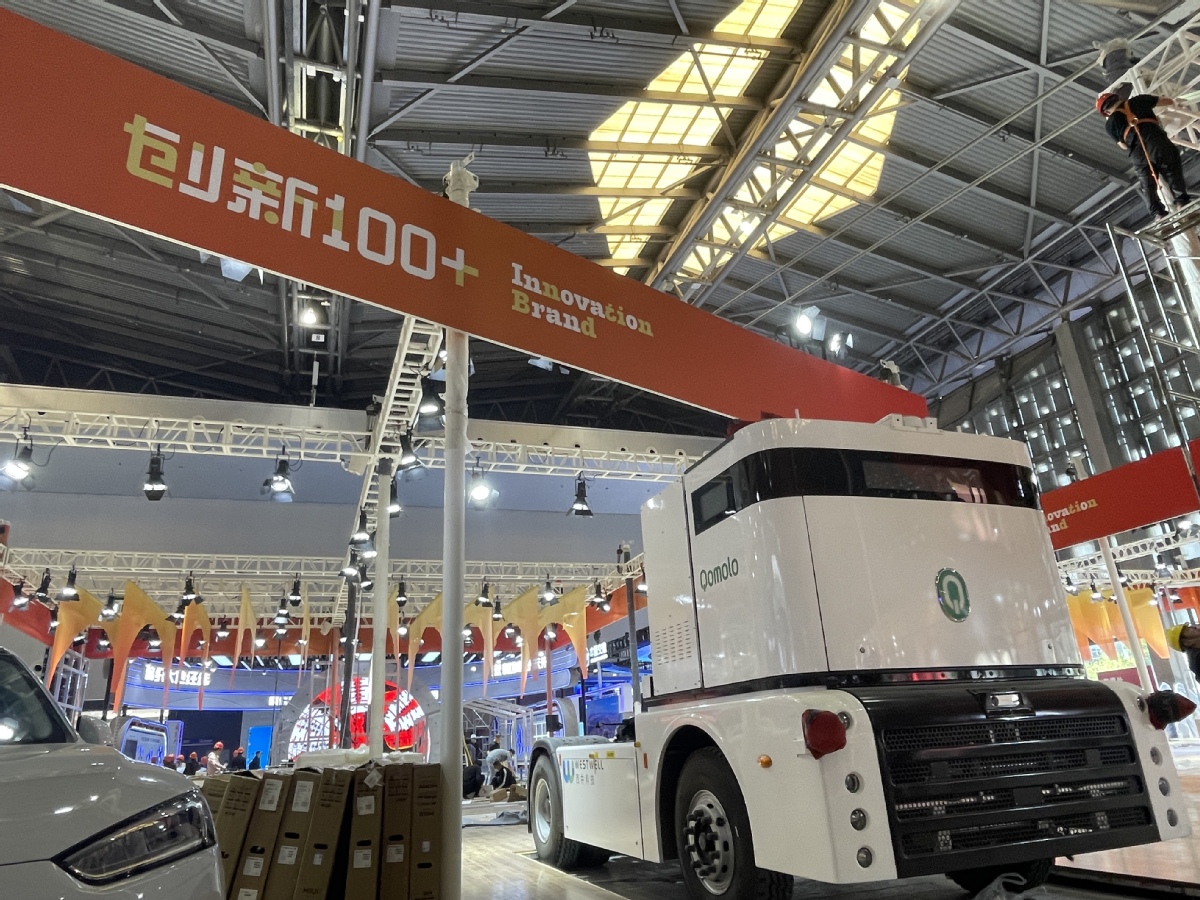
Roughly 1,000 Chinese enterprises will showcase their products in an exhibition to be held at the Shanghai World Expo Exhibition and Convention Center from Wednesday through Sunday.
A key event of the 2023 China Brand Day, which falls on Wednesday, the exhibition is aimed at highlighting the vitality that Chinese brands possess today.
Within the exhibition zone for Shanghai enterprises, around 30 businesses will showcase products and services related to the green and low-carbon, metaverse, and intelligent terminal industries.
Shanghai Westwell Information and Technology Co, a fast-growing enterprise renowned for its full-stack intelligent port solutions and driverless container trucks, will exhibit its independently developed Q-Truck, the world's first fully autonomous, driverless new energy commercial vehicle.
"Even under harsh weather and complex road conditions, Q-Truck can complete transportation tasks around the clock non-stop, thus freeing people from intensive, long-term, and high-risk driving operations, and provide intelligent, safe, and adaptive unmanned driving," said Hu Hongyuan, deputy general manager of the strategic development center of Westwell.
The company said that compared with diesel vehicles, the new energy Q-Truck will result in a reduction of 10.7 metric tons of carbon emissions annually as well as energy and vehicle maintenance cost savings of 100,000 yuan ($14,453).
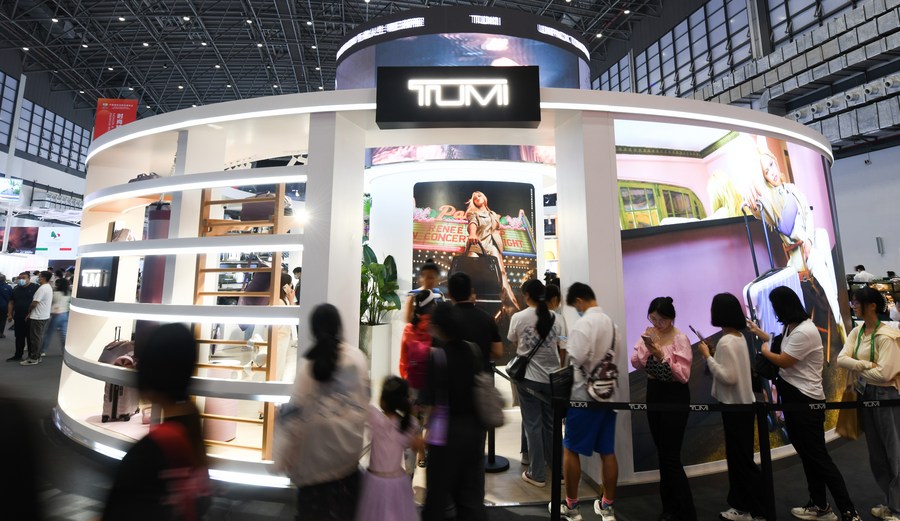
BEIJING -- Global luxury brands are poised to unlock fresh business growth points and tap into the vast Chinese consumer market, as China's economy is showing a faster-than-expected recovery.
"2023 is a year full of hope after the peak of COVID in China and all the measures are in place to relaunch the economy and consumption," Sophie Phe, the CEO of Remy Cointreau China, told Xinhua in an exclusive interview.
"We have seen the demand and vibrancy of the Chinese market return this year and the prospects are very exciting. Chinese customers are hungry for in-person experiences and are returning to physical stores as well as continuing to access our digital platforms. There is pent-up demand in China and the rest of Asia that we are now seeing released," noted Adam Hershman, vice- president of TUMI Asia Pacific and Middle East.
China's economy grew at a faster pace in the first quarter of 2023, with gross domestic product growing 4.5 percent year on year to 28.5 trillion yuan ($4.14 trillion) and major indicators showing an upward trend and improvement in market expectations.
In particular, retail sales of consumer goods went up 5.8 percent year-on-year in the first quarter, reversing a decline of 2.7 percent in the final quarter of last year.
These figures have again bolstered the confidence of luxury brands in ramping up investment in the world's second largest consumer market.
As a renowned company in the global spirits market, Remy Cointreau Group still expects a bigger market share in China, as in the spirits category, imported products only account for about 3 percent of the total alcohol market in terms of value in China, Phe noted.
"Some categories like cognac and single malt are growing fast. Consumers have the appetite for exceptional spirits with history and craftsmanship, and they are curious about how these products are made and the way to enjoy them," she said.
Bullish on rosy prospects and massive potential, the group has increased investment in China in recent years, including opening its first sustainability bar in Shanghai in February and a new boutique at the Haikou International Duty-Free Shopping Complex.
Noting that the company still sees a lot of scope to grow in the Chinese market, Hershman said TUMI is "encouraged by all the positive economic developments and projects, like the Hainan Free Trade Port, as they create even more opportunities for brands."
Mirko Bordiga, managing director of Maserati Greater China, is currently attending the Auto Shanghai 2023. Highlighting that next year marks the 20th anniversary of Maserati's presence in China, Bordiga said the carmaker has been a witness to the evolution of the Chinese auto market.
"Chinese customers have become extremely conscious and extremely competent when it comes to cars during the past years. And obviously this reverberates positively to the upper part of the range, so the pursuit of luxury cars has obviously been increasing. Though the epidemic affected us last year, we are confident that the situation will improve and it's already improving," Bordiga added.
China has, on various occasions, stressed its commitment to enhancing high-quality development and high-level opening up. The country is ready to provide a larger Chinese market to the world and bring more development opportunities to all countries.
As a regular participant at the China International Import Expo and the China International Consumer Products Expo, Remy Cointreau has already laid out plans to broaden its footprint in the Chinese market.
"Over the past three years, despite the pandemic, Remy Cointreau China has continuously expanded its business in China and grown investments behind its brands. The group is confident about the future in China, especially after the peak of COVID and the start of recovery in the market," said Phe.
"We are very supportive of the government's efforts to open up and boost trade," said Hershman, adding the recent positive economic policies will boost overall trade, tourism and demand in the Chinese market and will positively affect regional trade.
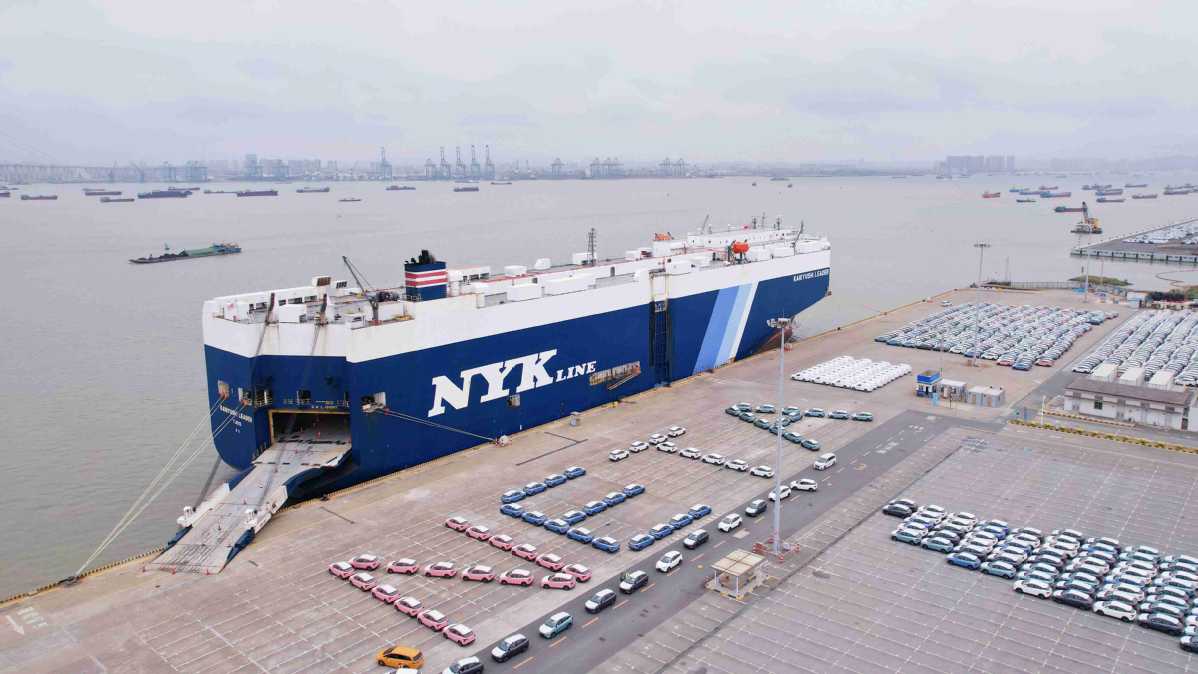
New energy auto shipments boom as quality, technology increase
With the sound of a siren, a ship carrying 3,000 of a domestic brand's new energy vehicles left a wharf in Guangzhou's Nansha district in Guangdong province one morning in late March, bound for a port in Southeast Asia.
It was the largest single shipment of such vehicles exported by a single domestic brand in South China since the beginning of the year, according to Guangzhou Customs.
Zhang Bojia, deputy director of the international logistics project team at China Capital Logistics Co Ltd, which handles new energy car shipments, said the company's exports from different mainland ports have continued to rise this year.
That is no accident, he said.
"China's independent brands have been exploring overseas markets in recent years, and their business strategy has shifted from focusing mainly on the domestic market to placing equal emphasis on both domestic and global markets," Zhang said.
"China's domestic auto brands have won recognition in many foreign markets, therefore, demand for export orders has also increased. This is in response to continuous improvements in domestic automobiles' product strength, sophisticated configurations and a favorable cost-performance ratio," he said.
Domestic new energy vehicle manufacturers have taken full advantage of the trends in information, digitalization, networking and intelligent development, and continuously increased their technological innovation efforts to achieve repeated product upgrades, he said.
Not only have they increased their influence in domestic markets, but also connected with global markets, bringing more intelligent and green products to overseas consumers, he added.
China sold 679,000 new energy vehicles abroad in 2022, up 1.2 times year-on-year, according to Customs officials. Significant growth trends have accelerated this year, they said.
Guangdong province's exports of electric passenger vehicles increased by 15.4 times year-on-year in the first two months.
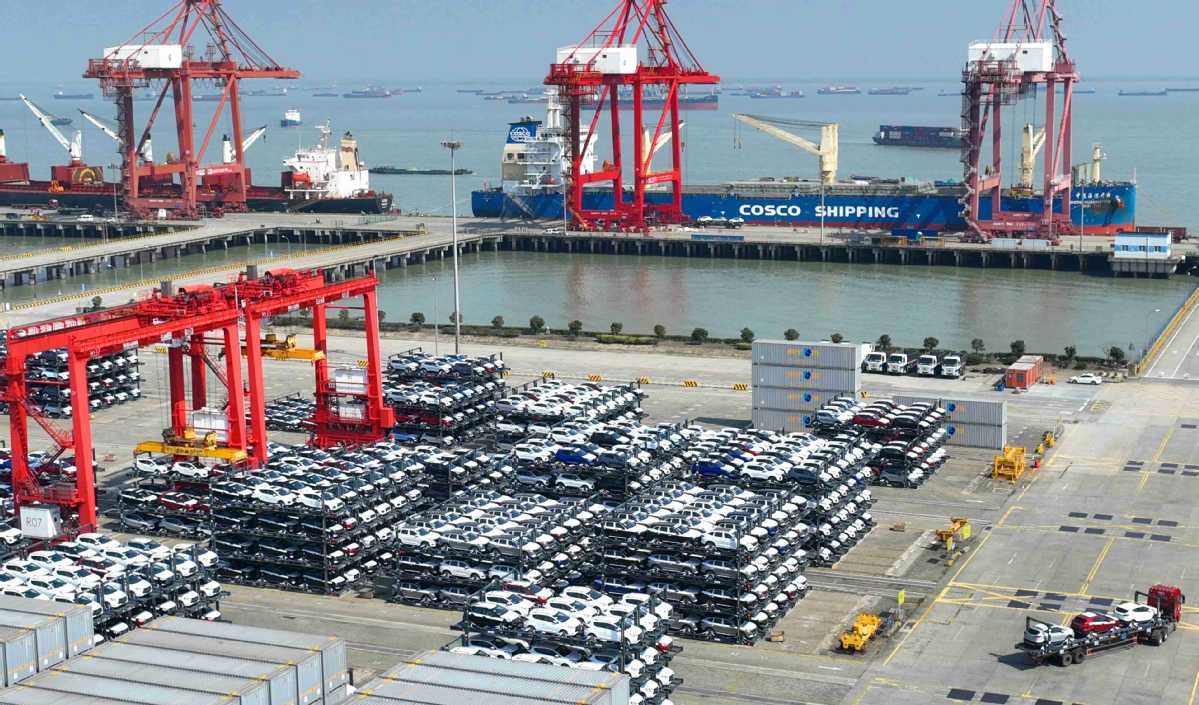
Officials said at least two vessels carrying vehicles have been leaving Nansha Port in Guangzhou every week for foreign ports.
At Shenzhen's Yantian Port, Customs declaration procedures were recently completed for 150 BYD new energy cars destined for Oslo, Norway, according to officials.
More than 3.6 billion yuan ($524.1 million) in new energy vehicles from the Shenzhen Special Economic Zone were sold to other nations and regions in the first two months, Customs officials said. The city's exports of new energy vehicles registered year-on-year growth of 2,300 percent in the January-February period, officials said, as COVID-19 control regulations were optimized.
Nansha Automobile Port, at the mouth of the Pearl River, has become the largest cluster of terminals for roll-on, roll-off specialty ships for wheeled cargo in South China, with seven 10,000-metric-ton dedicated berths for vehicle shipments.
The terminal clusters for the cargo ships include a commercial vehicle storage yard covering nearly 1.6 million square meters along its 1.8 kilometers of wharf coastline.
Nansha Automobile Port has established a total of seven automobile export routes, covering multiple countries in the Middle East, Europe, South America and Southeast Asia, according to Lu Chunrong, manager of the Business Development Department of Nansha Automobile Port. That has led more than 10 automobile brands, including Chevrolet, Chang'an, Geely and Chery, to ship their vehicles to the rest of the world from Nansha, Lu said.
To meet growing demand from the vehicle export business, the port will add Hong Kong and Macao berthing and international transit services to help further promote the export business of domestic new energy vehicles from Nansha in the coming months, Lu said.
Guangzhou Customs has further simplified procedures for vehicle exports this year to boost the development of the country's new energy and intelligent vehicle industries, said Li Lixiang, an official with Nansha Customs.
"Quick and convenient Customs clearance procedures, including a 24-hour reservation Customs clearance service, for the export of complete vehicles and core parts have been implemented to encourage domestic vehicle enterprises to increase their presence in global markets," he said.
As of March 21, the number of cars declared for export in the Nansha area of China (Guangdong) Pilot Free Trade Zone so far this year had exceeded 39,000, a year-on-year increase of over 1.6 times, according to Customs.
Most of the vehicles have been exported to more than 10 countries and regions, including Mexico, Saudi Arabia, Qatar, the United Arab Emirates and Thailand, Guangzhou Customs said.
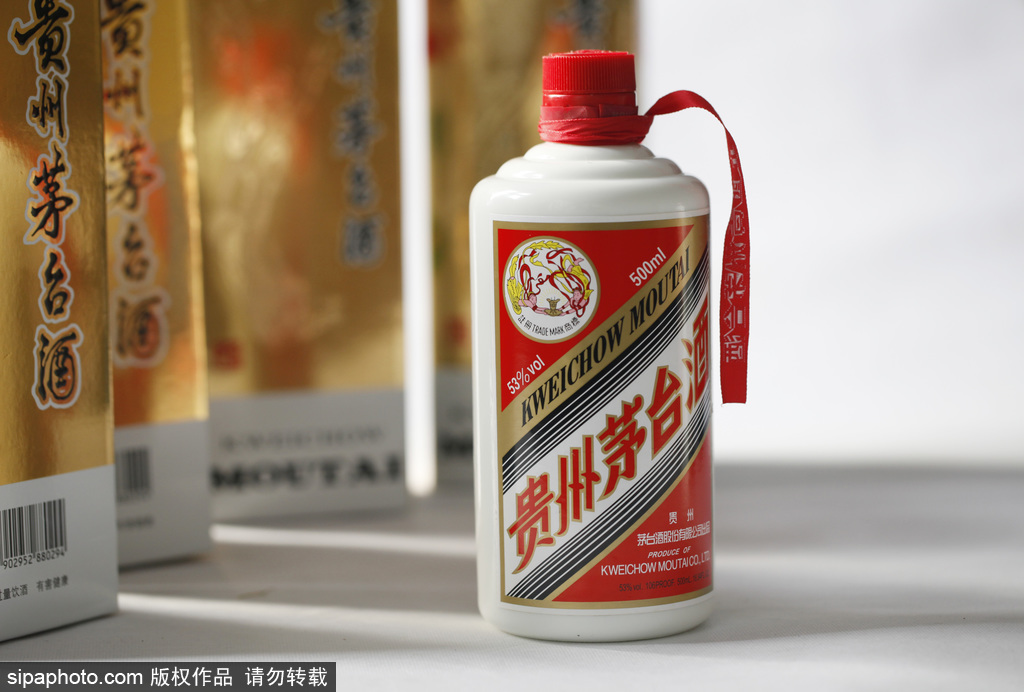
With a brand value of 1.04 trillion yuan($150 billion), Kweichow Moutai has become the most valuable Chinese brand for the fifth consecutive year, according to Hurun Most Valuable Chinese Brand 2022 ranking released on Monday.
Kweichow Moutai, the only trillion-dollar brand, is followed by another a liquor brand Wuliangye and a cigarette brand ChungHwa.
Although its brand value dropped 33 percent to 160 billion yuan, short-video app Douyin rose one spot to tie with WeChat for the fourth place.
Chinese consumers' trust in private brands has risen significantly in recent years. Sixty-two percent of the brands on this year's list are private, up from 61 percent last year and 39 percent a decade ago, said Rupert Hoogewerf, chairman and chief researcher of Hurun Report.
Beijing, Shanghai and Shenzhen remain the top three cities with the most brands on the list, with 70, 52 and 32, respectively, collectively accounting for more than half of the top 300.
This is the 17th year for Hurun Research Institute to release Hurun Brands List and the first year for the list to expand from the top 200 to the top 300 last year, with the threshold of entry adjusted to 2.5 billion yuan from 6 billion yuan last year.
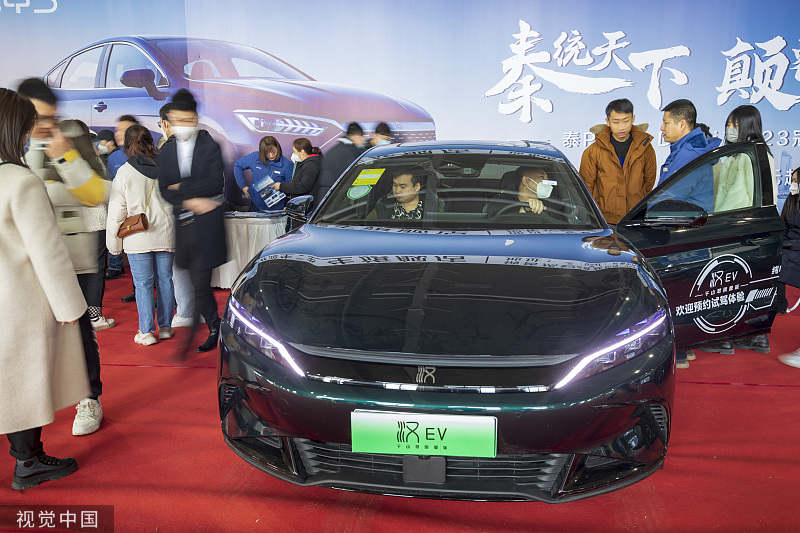
Market share of Chinese-brand passenger vehicles surged to 49.9 percent in 2022, up 5.4 percentage points, People's Daily reported on Thursday.
The cumulative sales volume of Chinese-brand passenger vehicles reached 11.766 million units in 2022, up 22.8 percent year-on-year.
This is due to continuous breakthroughs in core technologies, improvement in design and manufacturing quality, and accelerated innovation in intelligent networking and electrification technologies and business models.
China's energy density of a single mass production power battery has reached 300 watt-hours/kg, which is at the international leading level.
The monthly market share of Chinese-brand passenger cars has climbed steadily since reaching 50 percent in September 2022, reaching 56.8 percent in December.
As product quality and service improve, the country's automobile export made new progress. Data indicates that China exported 2.529 million passenger cars in 2022, up 56.7 percent year-on-year.
The annual sales of new energy vehicles reached 6.887 million last year in China, with a year-on-year growth of 93.4 percent, and the market share increasing to 25.6 percent, 12.1 percentage points higher than the previous year. Among them, the Chinese brand new energy vehicle market share was as high as 79.9 percent.

Domestic firms find younger shoppers drawn to products that incorporate traditional associations
With buying power rising among young, heritage-minded consumers, domestic cosmetics brands are winning hearts with guochao — a trend that is seeing younger buyers drawn to products with Chinese cultural elements.
In one case, brands are embracing solar term or jieqi marketing, a concept based on China's ancient calendar, incorporating elements of lunar and solar calendars, which divides the year into 24 periods. This type of marketing is used to inject a sense of nature into beauty routines.
Chinese cosmetics brand Timage launched a product series in the third quarter of 2022 based on the theme of liqiu, the 13th solar term, which starts around Aug 8 and signals the beginning of fall.
Grain Rain, a Chinese skincare brand, is inspired by the eighth solar term, guyu, referring to early crops, which starts around April 20. It was accompanied by a spring-inspired marketing campaign represented by actress Zhou Dongyu in April 2022. It uses the solar term's traditional association with picking herbs to reinforce the label's herbal skincare branding.
Likewise, Hangzhou-based beauty brand Huaxizi, called Florasis in English, has been marketing "solar term makeup" since the beginning of 2021. It suggests wearing different makeup for different solar periods, such as chunfen, or spring equinox; xiaoshu, or minor heat; bailu, or white dew; and daxue, or major snow.
That numerous brands are using the ancient calendar as a seasonal marker reflects a broader revival in China of heritage-related products, especially among younger consumers.
"We have always integrated culture with cosmetics and combined traditional Chinese culture with fashion. Solar terms, as an excellent part of traditional culture, represent Chinese customs and lifestyles, so integrating solar terms into our products was not done on a whim. We aren't doing it for a short-term connection with consumers. It's a long-term thing we are doing," said Lin Zengsheng, branding director of Huaxizi.
Consumers are expressing confidence in themselves by using Chinese brands, marketing experts said. Also, their identification with Chinese cultural elements incorporated by the brands is a reflection of the improvement of national strength and the return of the collective aesthetic, they said.
Generation Z — those born from the mid-to-late 1990s and into the 2000s and a major consumer group — is being affected by the country's cultural renaissance and the development of the internet. They are more independent in their choices and have a greater sense of national identity, experts said.
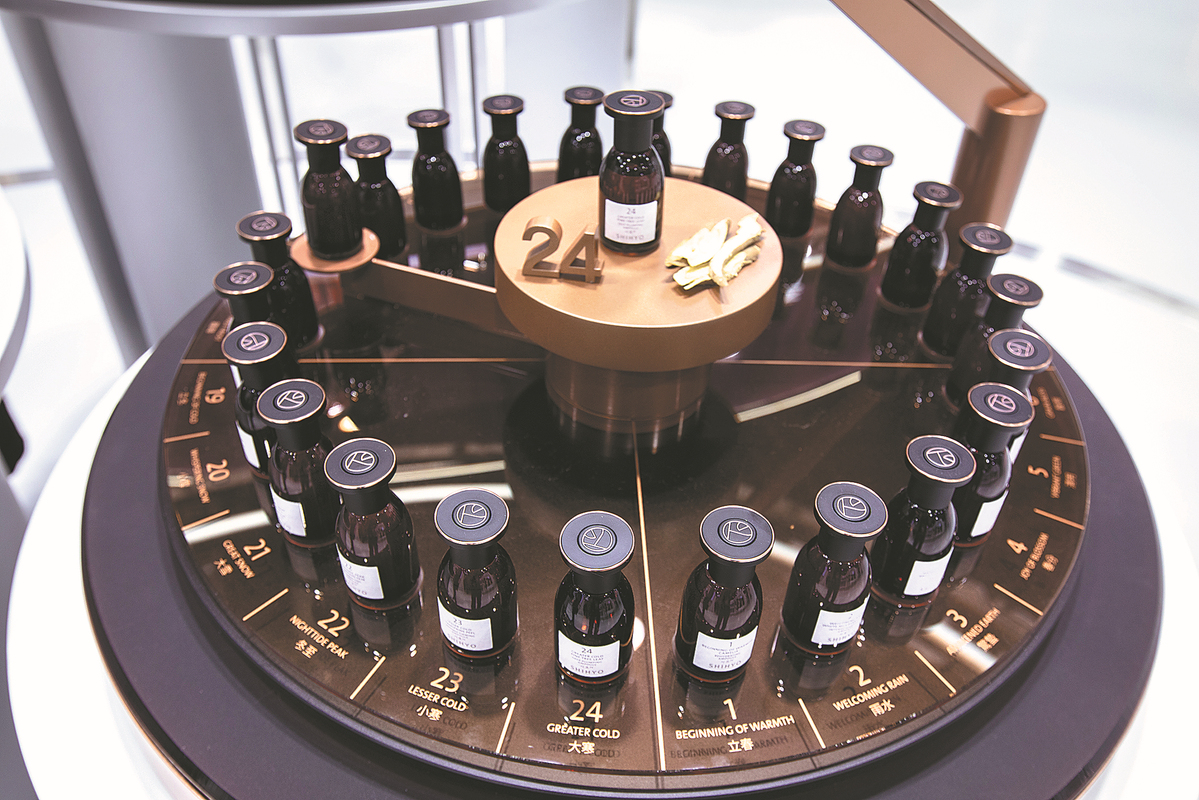
With the rise of guochao, and the influence of the expansion of China's manufacturing ability, consumers are showing an increased preference for domestic cosmetics brands, according to a recent report issued by consulting firm Ernst & Young. Although China's high-end cosmetics market has been dominated for a number of years by international brands, the market influence of homegrown brands has been rapidly rising.
A white paper issued by Tencent Inc states that domestic cosmetics companies have a market share of 56 percent. It said 60 percent of surveyed consumers prefer to purchase domestic cosmetics brands, while 42 percent had a strong willingness to make repeat purchases of those brands.
Also, the post-90s generation is becoming an important source of customers for domestic cosmetics, accounting for nearly 50 percent of sales of those products, according to the white paper.
"With young people becoming the backbone of consumer buying, guochao is entering a new stage in which Chinese brands, Chinese culture and Chinese technology will lead to new fashion trends and lifestyles," the white paper said.
"Among the numerous guochao categories, cosmetics, as one of the most popular categories, is expected to embrace rapid development. It is estimated that China's cosmetics market will surpass 500 billion yuan ($72.65 billion) by 2023," added the white paper.
In China's third-tier and smaller cities, the penetration rate of domestic cosmetics surpasses 90 percent, and the growth rate of lip balm and lipstick sales has been over 60 percent for two consecutive years, according to a report launched by Juhuasuan, the group-buying arm of e-commerce giant Alibaba.
A survey from iiMedia Research showed that in 2022, 36 percent of the surveyed Chinese consumers spent between 200 yuan and 500 yuan on cosmetics monthly, while 35.5 percent spent between 500 yuan and 1,000 yuan monthly.
"With people's makeup and skincare awareness rising and the recovery of the economy, it is expected that China's cosmetics market will see more growth," iiMedia Research said in a survey report.
According to the survey, nearly half of the surveyed consumers considered guochao cosmetics creative and were willing to support its development, while nearly 30 percent of interviewees thought guochao cosmetics interesting but were taking a wait-and-see stance.
"Although domestic cosmetics have made gains using the idea of guochao, the product itself is important. Only when quality matches appearance will the product win the hearts of consumers," said iiMedia Research.
On Feb 15, Huaxizi launched a pop-up store in Tokyo, Japan, the company's first overseas. It sets the mood with a classical Chinese garden display and decorative styles of ancient China.
The store showcases most of Huaxizi's products, including Flawless Jade Breathable Setting Powder and Concentric Lock Lipstick. The pop-up store drew attention on its first day, attracting nearly 100 media staffers and over 500 consumers.
"We chose Japan as our first destination for an overseas pop-up store because Chinese and Japanese cultures share the same origin, and it is easier for Japanese customers to understand and accept Asian aesthetics and cultural implications in our products," said Lin of Huaxizi. "We hope that through some face-to-face interactions, Huaxizi will better understand Japanese users' beauty habits and beauty culture, and Japanese users will also understand Huaxizi better and see the quality and beauty coming from China."
He added that "to some extent, our going global process is not only the internationalization of our products but the internationalization of Chinese culture. We are not doing overseas 'cultural marketing' deliberately. Everything happens naturally.
"We believe that beauty is pluralistic and has commonality, national beauty is world beauty and a product can be the best carrier of culture and aesthetics. We have always insisted on integrating culture with products, and then the world take notice."
Chen Jia, a researcher at the International Monetary Institute of the Renmin University of China, said: "The rise of guochao-empowered cosmetics is an inevitable trend during China's modernization process. To realize high-quality development, domestic cosmetics brands should promote technological advancement and the integration of culture and products. In this way, they can stand out in the market and win the trust of consumers."
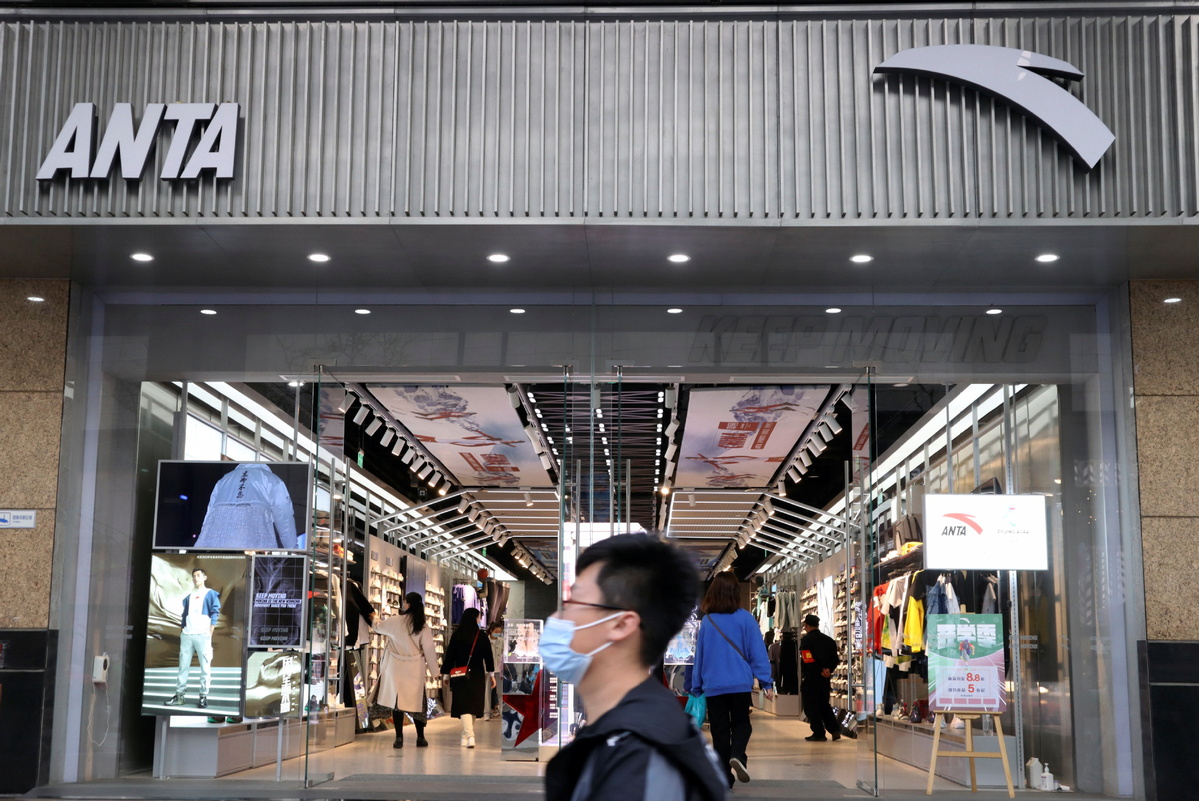
FUZHOU -- Major Chinese sports enterprises such as Anta, Xtep and Li-Ning enjoyed considerable growth in 2022, according to annual financial results released in recent days.
Anta's full-year revenue rose 8.8 percent year-on-year to 53.65 billion yuan, with annual revenue exceeding 50 billion yuan for the first time in the company's history.
Anta remains on top of China's sporting goods industry for the 11th straight year. The number of Anta employees rose by 7,000 in the past year, and the company is to hire 25,000 more in 2023.
The Beijing Olympic Winter Games was a major growth point for Anta in 2022. As a sponsor of the Games, Anta provided products for 12 Chinese national winter sports teams. The brand benefited from this link with a greater number of consumers purchasing their products.
"With further support for private enterprises from our country, the rapid recovery of the sports industry and the steady development of the economy, we are more confident in our goal of high-quality development," said Ding Shizhong, chairman and CEO of Anta Sports.
Xtep International achieved revenue of 12.93 billion yuan, up 29.1 percent year-on-year. The company has been focusing on running shoes in recent years. In September 2022, Xtep announced the new goal of producing "world-class Chinese running shoes". The brand continued sponsoring marathon events last year and their running clubs have attracted 1.7 million participants.
"In the next 10 years, Xtep will invest five billion yuan to promote the running industry in China," said Ding Shuibo, president of Xtep.
The revenue of Li-Ning increased by 14.3 percent to 25.8 billion yuan. Li-Ning has focused on sports such as basketball, running, fitness and badminton. The number of domestic Li-Ning retail stores has reached 6295, 360 more than in 2021.
"We believe there is still a lot of room for the development of the Chinese sports market," said Li Ning, founder of the company that bears his name. "We will keep improving our product to better meet the needs of our consumers."
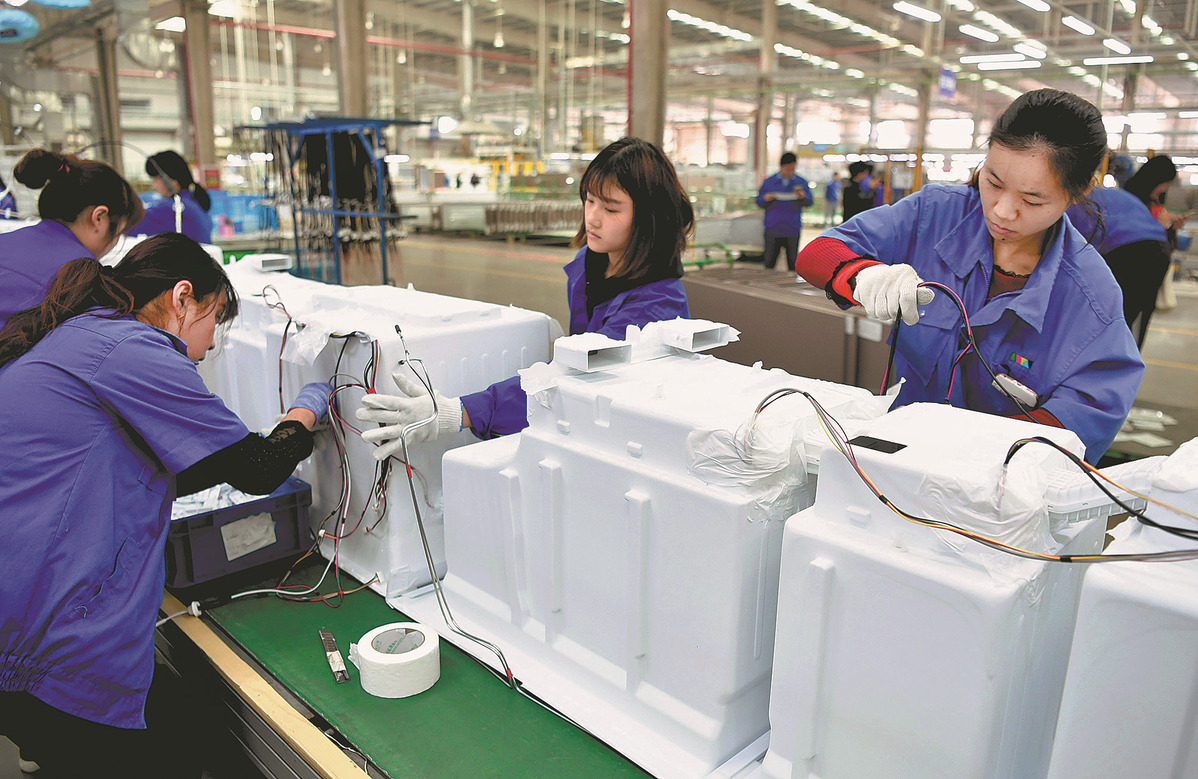
Chinese home appliance makers are ratcheting up efforts to expand their presence in overseas markets, increase investment in localized research and development and roll out high-end products amid intensified competition from rivals in the domestic market.
Industry experts said establishing overseas branches or production centers will not only spread China's advanced manufacturing, R&D and management capabilities abroad, but also create job opportunities for locals, boost brand awareness and enhance the competitiveness of Chinese enterprises globally.
Chinese consumer electronics company TCL Technology Group Corp is accelerating steps to strengthen its global operational capabilities and expand its overseas footprint in the semiconductor display and photovoltaic industries.
In recent years, TCL has expanded overseas factories making televisions, modules and photovoltaic cells in Vietnam, Malaysia, Mexico and India. It has established ventures with local partners in Brazil to jointly build production centers, supply chains and an R&D system.
"Looking ahead, we will actively consider increasing industrial centers in Africa and strengthening our business in the Middle East," said Li Dongsheng, founder and chairman of TCL. Li added that building global competitiveness has always been an important strategy for the company.
TCL has set up 43 R&D centers and 32 manufacturing centers around the world, with operations in more than 160 countries and regions. International business has become TCL's biggest growth engine.
Li said China's manufacturing sector should transition from exporting products to exporting industrial capacity given current global economic patterns, thus driving exports of domestic components, materials and equipment.
"We should accelerate the building of global industrial chains, break down trade barriers and build and improve our operations systems in the global market," he said.
The retail sales of China's home appliance sector reached 708.1 billion yuan ($103 billion) in 2022, down 7.4 percent year-on-year, according to Beijing-based market consultancy AVC.
"Expansion into overseas markets will not only relieve the pressure of high inventories in the domestic market, but also increase the international influence of Chinese home appliance companies," said Dong Min, deputy secretary-general of the China Video Industry Association.
Jia Shaoqian, president of Qingdao, Shandong province-based home appliance maker Hisense Group, said revenue from overseas markets is expected to take up more than half of the company's total revenues within three years.
Hisense is accelerating its overseas expansion in high-end laser TVs and ultra light-emitting diode TVs, which reflect great improvements in image quality over earlier technologies. Its laser TVs have been sold in many countries and regions, including the United States, Australia, Germany, France, the United Arab Emirates and South Africa.
Hisense ranked second in global television shipments in 2022, an increase of 16.1 percent year-on-year, according to market research company Omdia.
The company also aims to boost its brand awareness via sponsorship of major sporting events. In recent years, Hisense has been a sponsor of several world-class sporting events, including the UEFA Euro 2016 tournament and the 2022 FIFA World Cup in Qatar.
Seeing demand grow for air conditioners in the Middle East, Chinese home appliance giant Midea Group has been seeking opportunities to localize manufacturing in the region in hopes of offering faster delivery for local consumers.
The company has set up an overseas office in Dubai, the UAE. It has also built a refrigerator, washing machine and water heater factory in Egypt that serves Middle Eastern and African markets.
It will continue to offer low-carbon, energy-saving and intelligent building technologies for the Middle Eastern market, speed up localization efforts and employ more local people in sales, technology services, finance and operations, the company said.
Midea said it has seen booming sales from Spain, France and Russia by means of AliExpress, Alibaba Group's business-to-customer platform, since the start of 2023.
In what appears to be a powerful trend, Chinese home appliance manufacturers are expanding their footprint to overseas markets for new profit growth and long-term development, given that the domestic home appliance market is almost saturated, said Zhao Meimei, assistant president of AVC.
"In the past, most Chinese enterprises adopted the original equipment manufacturer model, but now they are more likely to build up their own brands in a bid to bolster competitiveness on the global stage," said Liang Zhenpeng, an independent consumer electronics analyst.
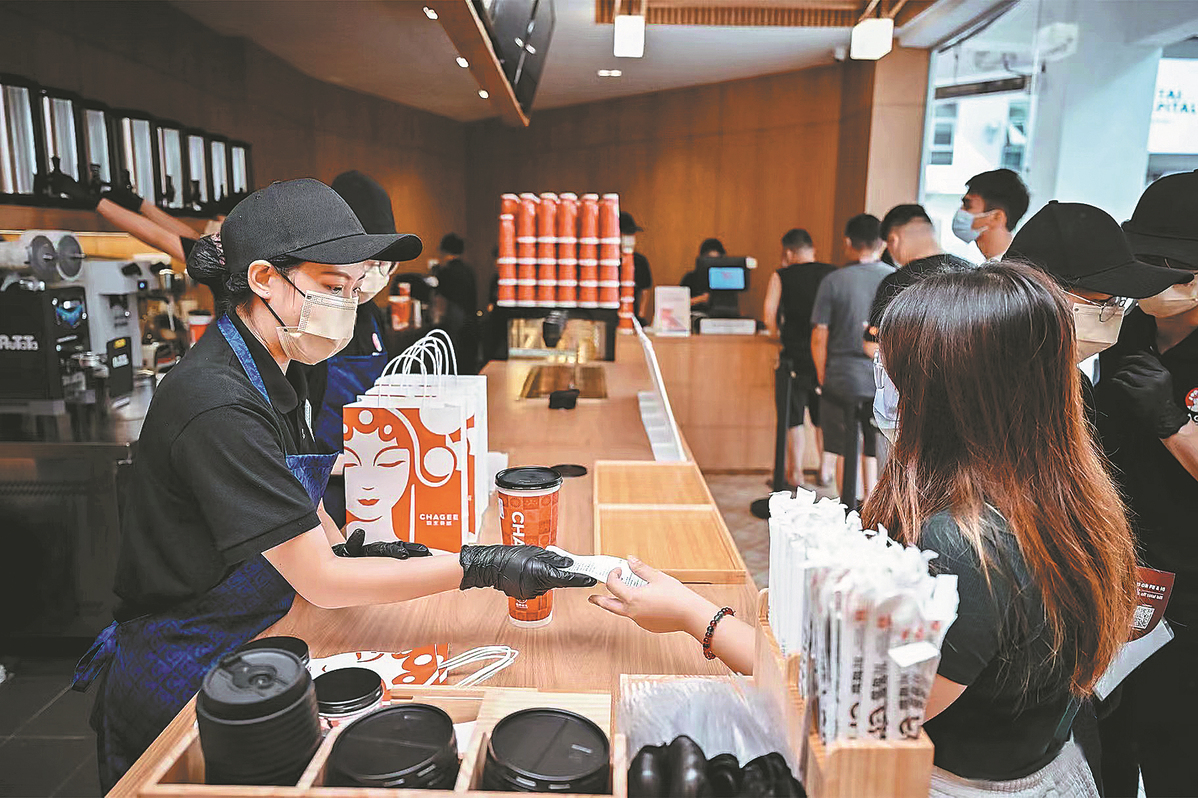
Chinese tea and ice cream brand Mixue's first store in Australia, which officially opened in downtown Sydney on Feb 25, is attracting long lines of customers.
Located in the World Square Shopping Centre, the store earned revenue of about 24,000 yuan ($3,463) during its soft opening two weeks earlier.
On the Xiaohongshu lifestyle platform, user "xiaoning" said that during the soft opening from noon to 10 pm, long lines kept forming at the outlet, with some customers waiting more than three hours for a cup of milk tea.
On Christmas Eve, "Snow King", Mixue's brand figure, appeared in Tokyo clad in a red cloak and cruising in an open-top car to celebrate the opening of the company's second store in Japan.
New-style Chinese tea brands are continuing to expand overseas, turning in eye-catching performances. They are mainly targeting Southeast Asia, and in addition to promoting Chinese culture, they embrace local pop culture.
Since a new wave of these brands began exploring overseas markets in 2018, Southeast Asia has been their first option, as they see market potential in the region due to its large number of young customers.
In 2018, Chinese tea makers Heytea and Nayuki entered the Singaporean market. The same year, Mixue chose Hanoi, the Vietnamese capital, for its first overseas foray. On the first day in the city, the store sold nearly 1,400 cups of tea.
A year later, Chinese tea brand Chagee, which was founded in Yunnan province in 2017, chose Kuala Lumpur, capital of Malaysia, to expand into Southeast Asia. The brand has gained widespread popularity in that country, where it now boasts 50 stores.
Shang Xiangmin, co-founder of Changee, said the average monthly income at one of the company's stores in Malaysia is about 300,000 to 400,000 yuan, some 1.5 to two times higher than the figure for the domestic market.
"Malaysia has a tea-drinking culture, and as its per capita consumption level is higher than those of many other countries in Southeast Asia, people are more open to accepting new products and flavors," Shang said, adding that customers in the region prefer to drink tea in a store instead of taking it away.
"Around one-third of our stores in Southeast Asia are located in shopping malls, half are on streets, and the remainder are based at transportation hubs such as airports," Shang said.
He added that although the market for tea in the region has a solid foundation, it is not as developed as the Chinese mainland's in terms of product variety and categories.
"In Southeast Asia, customers prefer sweet milk tea, while in China, they now tend to go for options with less sugar, or fruit tea," Shang said.
"We are positioning ourselves as a high-end milk tea brand in the region, but it takes time to win customers over. As we open more stores in Malaysia, local customers will realize we are a chain brand, not a single milk tea outlet," he added.
With Malaysia, Singapore and Thailand as its main overseas targets, Chang said Chagee plans to research the United States market this year.
The name Chagee originates from the ancient Chinese drama Bawang Bieji, also known as Farewell My Concubine, and brand's logo features the figure of a huadan (a young woman in Peking Opera).
In its overseas stores, Chagee showcases traditional Chinese culture by including elements of Chinese opera in the decor and also in the packaging of its drinks.
"The names of our tea products are based on the titles of Chinese poems. On our menu, we categorize products based on the type of tea, which is one of our ways to introduce Chinese tea culture," Shang said.
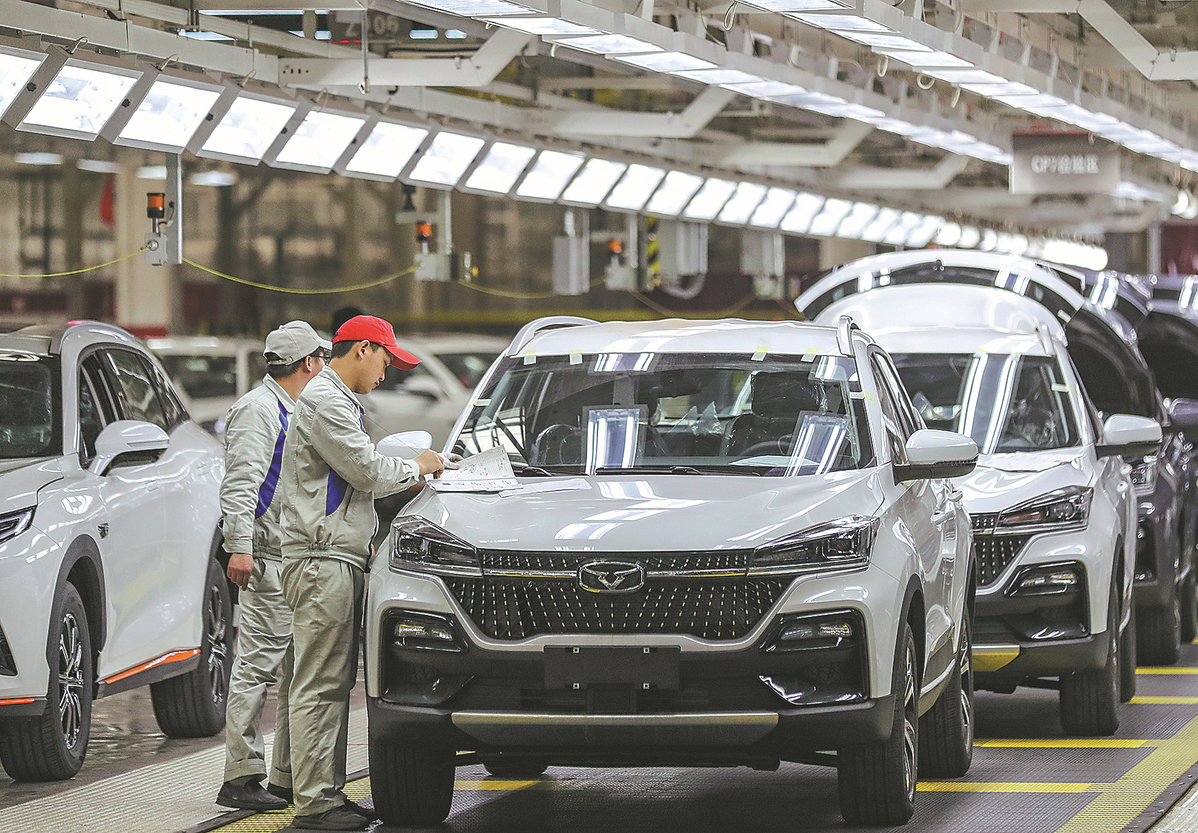
China-made new energy vehicles are gaining in popularity globally, which automakers and experts said is a sign of the country's leading position in the burgeoning sector.
Chinese and foreign carmakers exported 170,000 electric vehicles and plug-in hybrids from China in the first two months, up 62.8 percent year-on-year, said the China Association of Automobile Manufacturers.
Chen Shihua, deputy secretary-general of the CAAM, said made-in-China vehicles are benefiting from an enhanced image thanks to their competitive edge in electrification and cutting-edge onboard functions including autonomous driving.
The CAAM's statistics show that by the third quarter of 2022, there were 411 models available in China with driving-assist functions including automatic parking, and most of these were NEVs.
"Destinations of exports tell something. In the past we mainly exported vehicles to South America and Africa. Now, our NEVs are selling well in new destinations that we failed to get a foothold in previously, like Europe," said Chen.
Both established giants and startups now consider Europe, where modern vehicles were invented, as a priority market in their global campaign.
New York-listed Chinese startup Nio entered Europe in 2021 with Norway as its first stop. In 2022, it expanded into four other European countries including Germany and Sweden.
Its electric sedan ET7 was named late last year as the best model in the "Medium and Upper Class" category in the 47-year old Golden Steering Wheel competition in Germany.
The award made Nio the first Chinese automaker to win the much-coveted accolade, which is usually won by German and Japanese brands.
SAIC Motor said its MG4 Electric is now available in around 800 dealerships in dozens of European countries, with monthly orders now exceeding 10,000 units.
The model was the result of its Chinese and British teams focusing on new car quality standards in different countries, said the carmaker.
Chinese bus maker Yutong sat atop the list of popular electric bus brands in Europe in 2022, beating local giants including Mercedes and Volvo.
A total of 479 Yutong e-buses were registered in Europe last year, up 58 percent year-on-year, seizing an 11.5 percent share of the growing market, according to consultancy Chatrou CME Solutions.
Yin Tongyue, chairman of Chery Automobile, said the popularity of China's NEVs is backed by the country's sound supply chain, from electric motors to batteries.
There were 723,000 companies in China's NEV sector by the end of February, of which 80 percent were established within the past five years, according to Chinese corporate information provider Tianyancha.
South Korea's SNE Research said that six out of the world's top 10 makers of power batteries used in NEVs in 2022 were Chinese, with CATL sitting atop the list for six years in a row.
The availability of experienced workers in the NEV sector is another factor in China's increasingly competitive edge.
Grace Tao, vice-president of Tesla, said "99.9 percent" of its employees in China are local Chinese. Tesla's plant in Shanghai is one of its global export hubs.
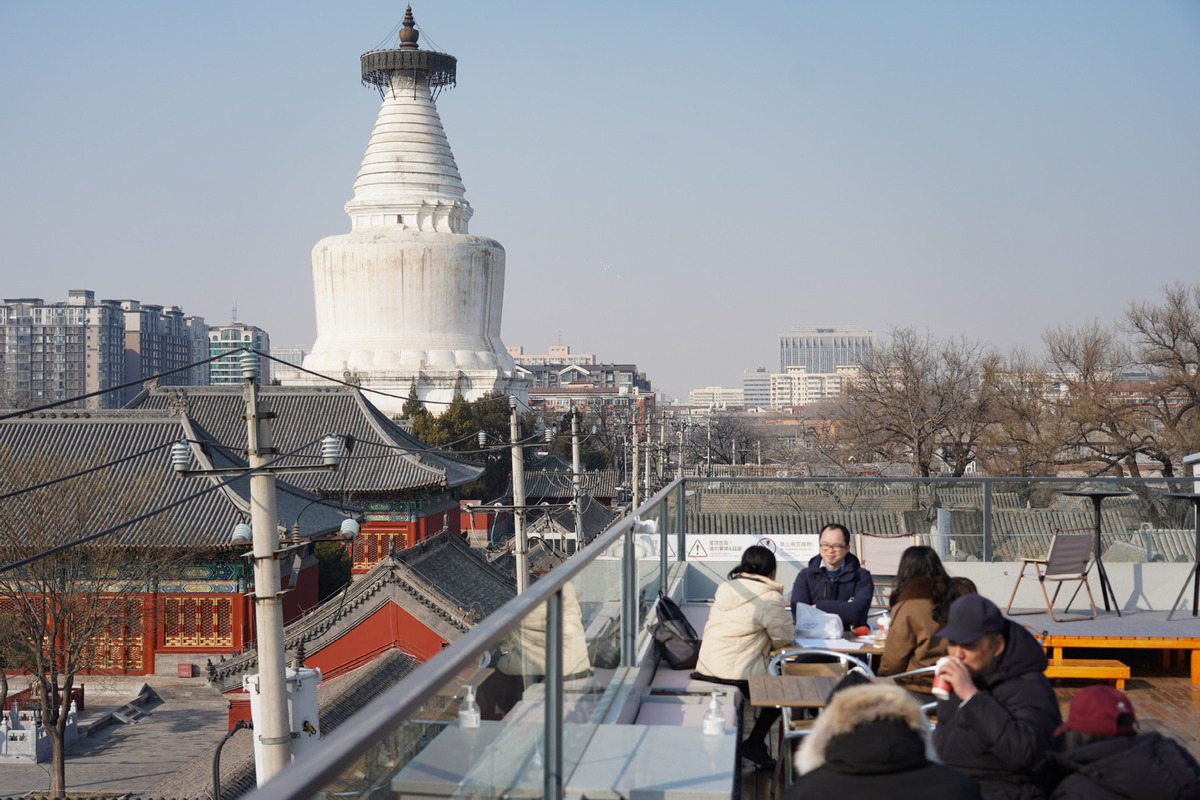
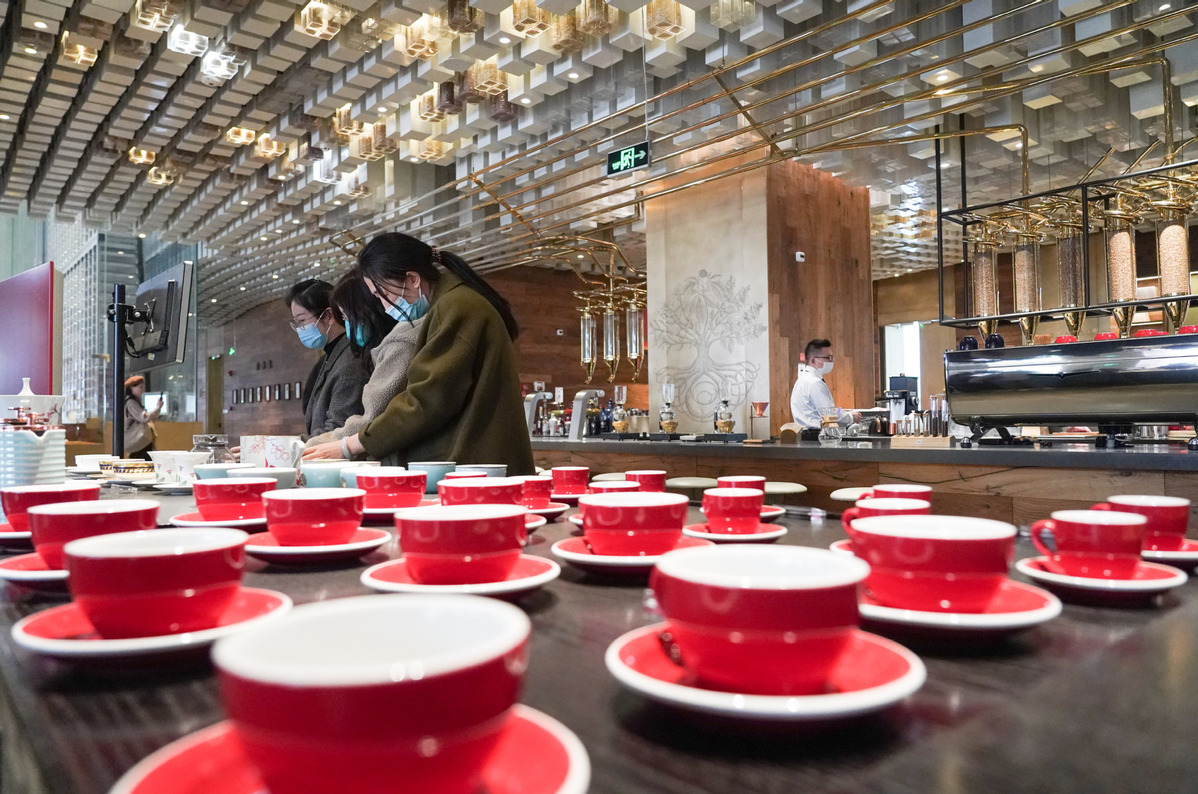
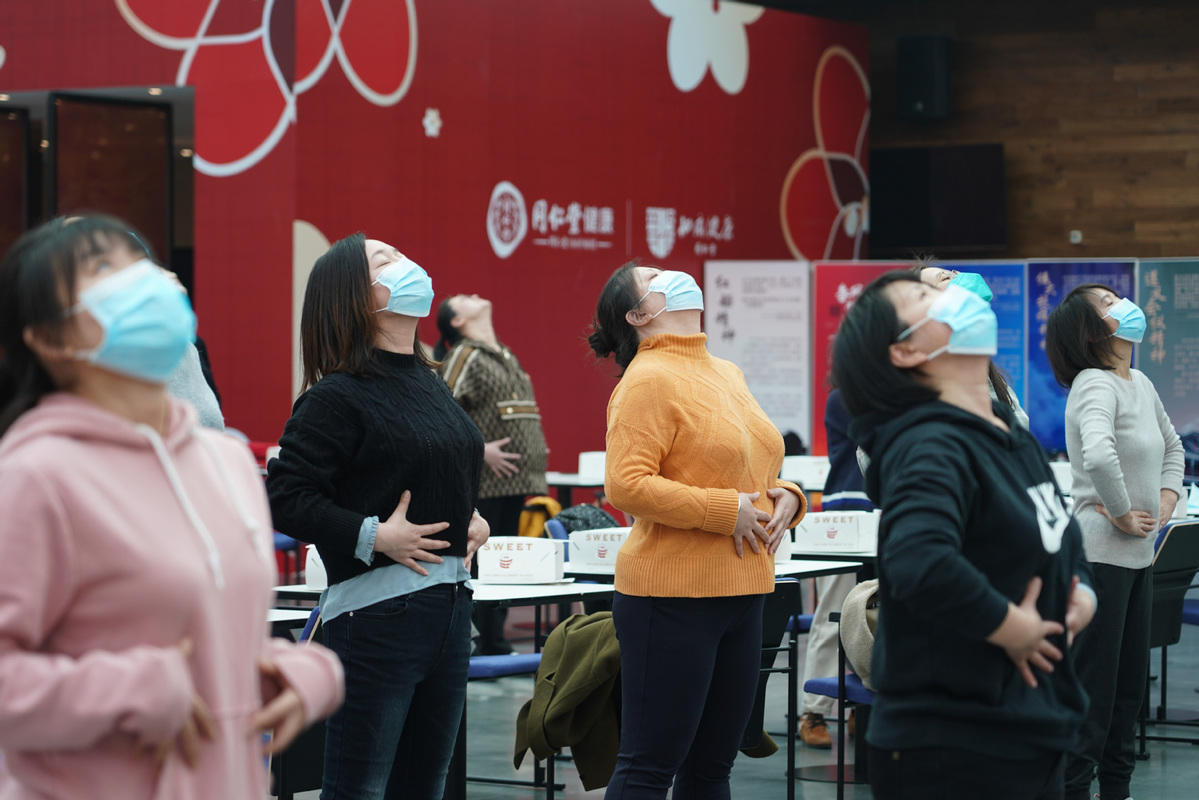

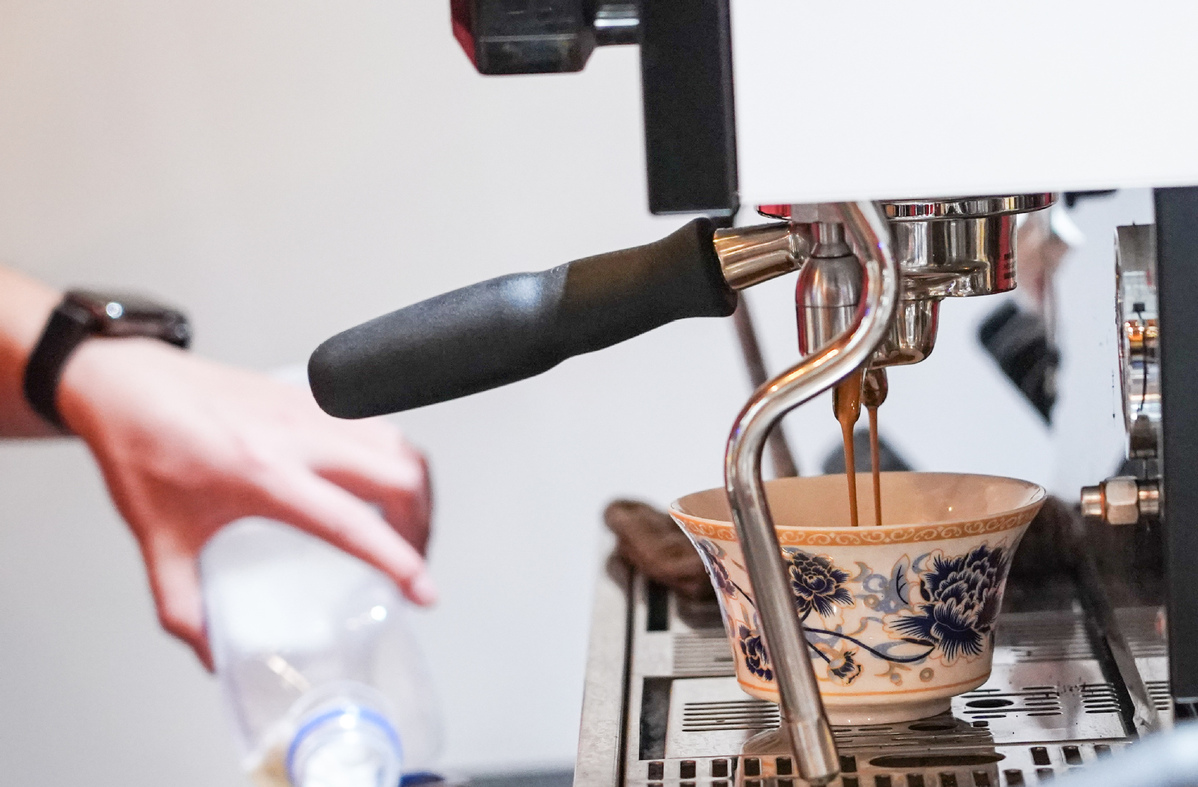

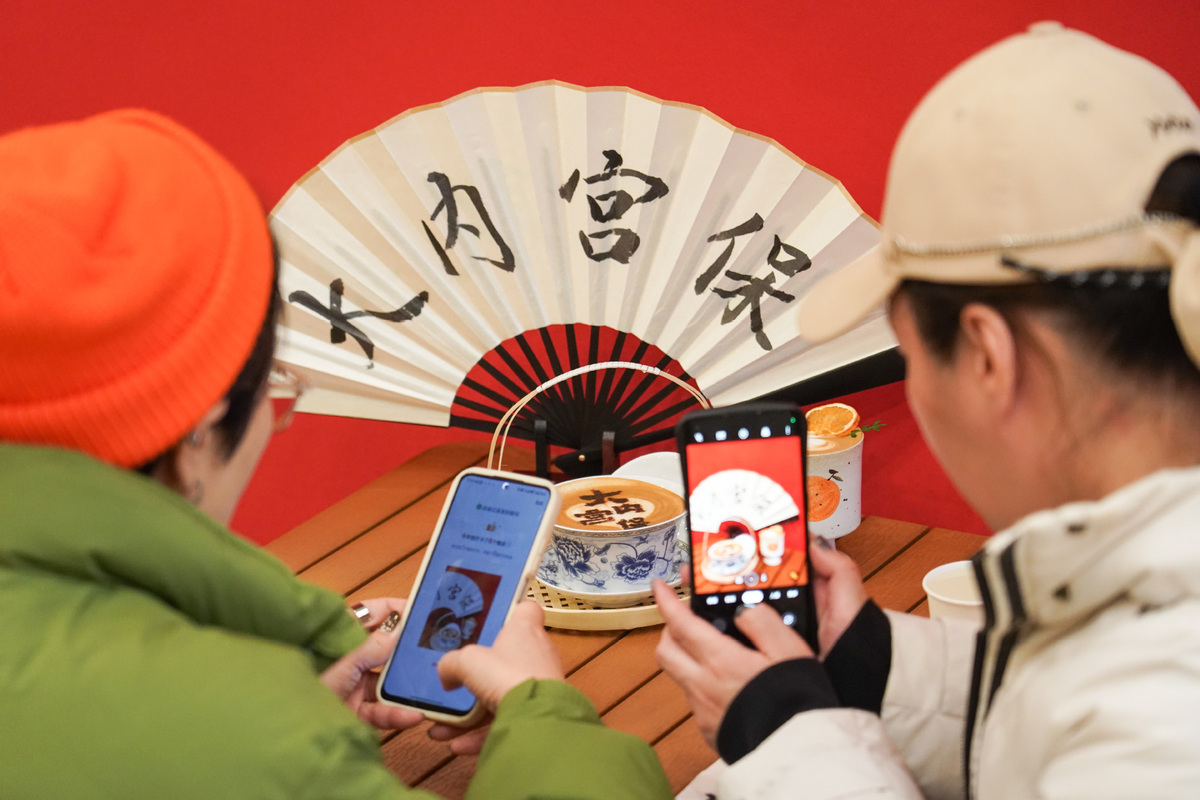
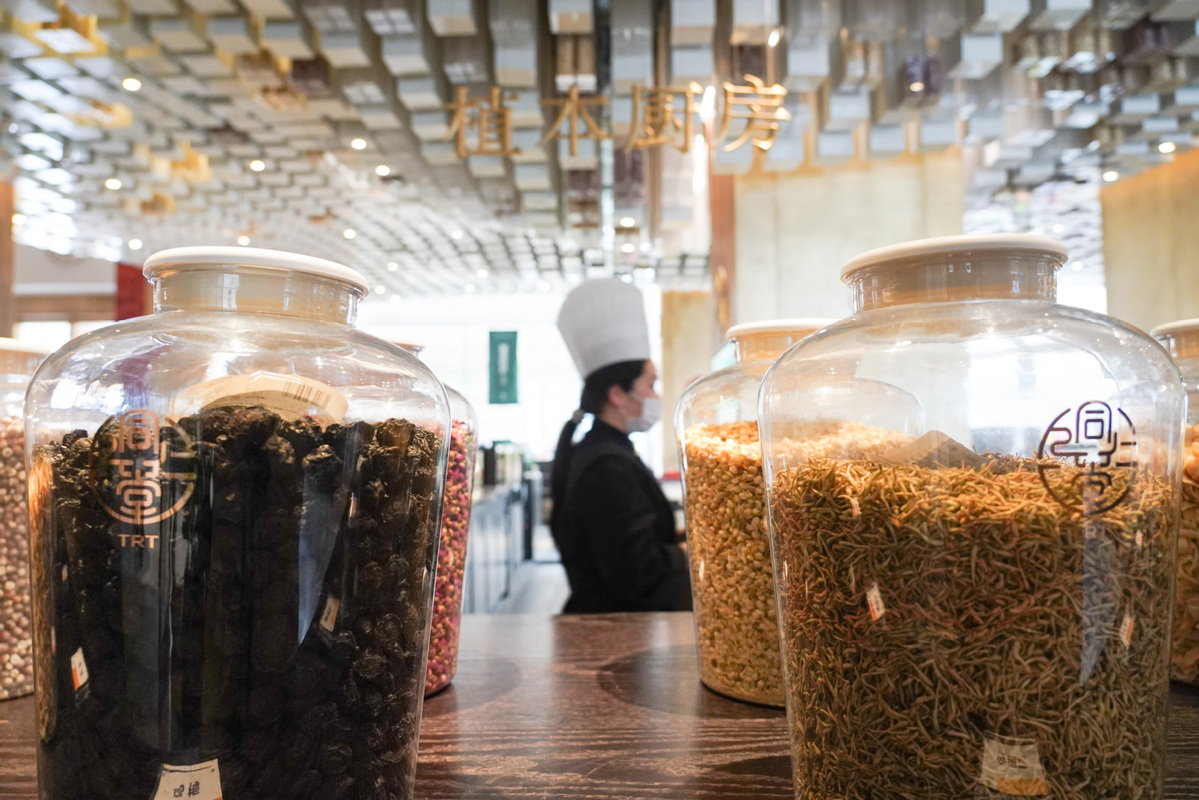
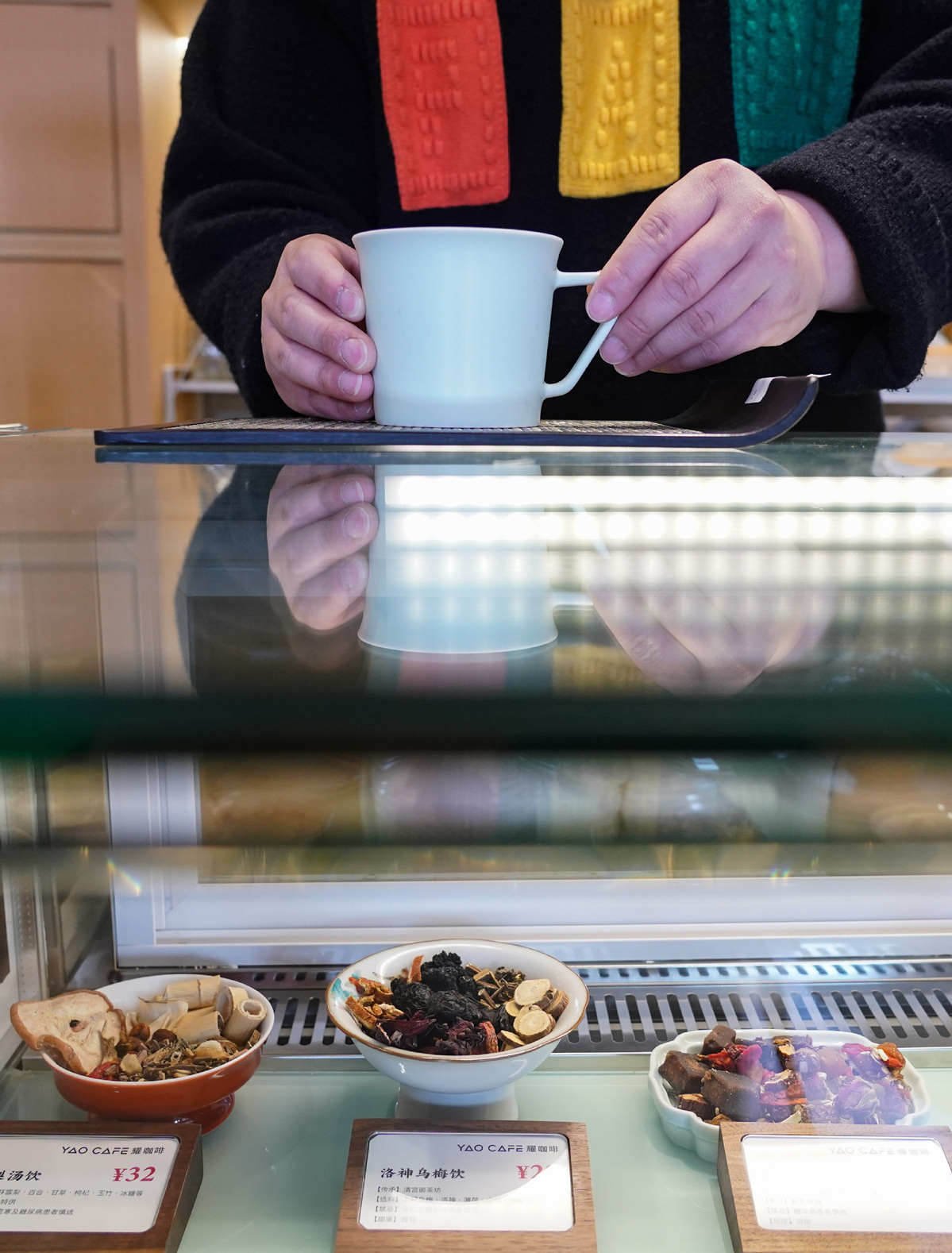
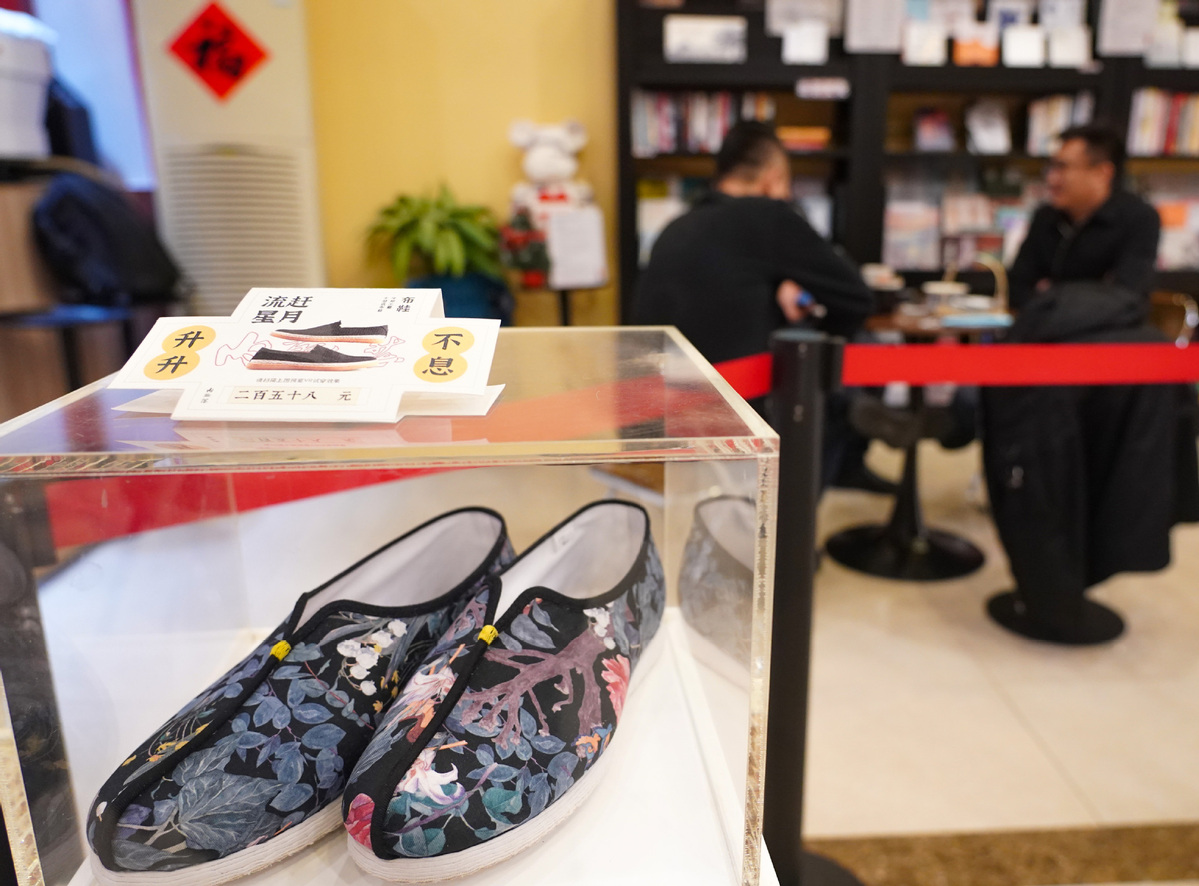
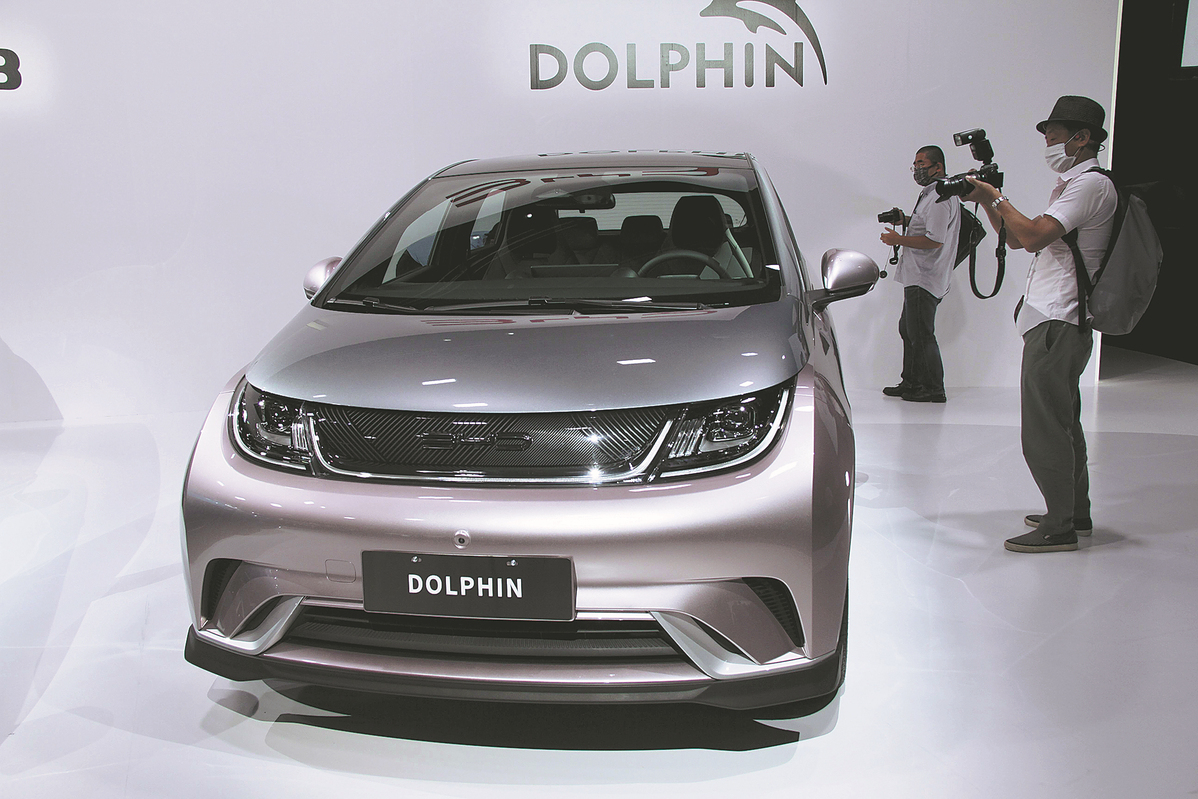
TOKYO — While Japan's unique business culture and a strong emphasis on quality may have deterred some foreign firms seeking quick money to enter the country, an increasing number of Chinese companies, with their long-term commitment and solid steps, are starting to gain a foothold in the hard-to-crack market.
On Jan 31, China's leading electric vehicle manufacturer BYD started selling its sports utility vehicle ATTO 3 in Japan, with its first dealership opened in Yokohama.
The automaker is also planning to introduce two more models later this year and to have more than 100 dealerships in Japan by the end of 2025.
In the auto powerhouse, with its high level of customer loyalty to local brands and low EV penetration as hybrids remain the mainstay, BYD's foray into the EV passenger car market marked a significant step forward as the company seeks to bring its business to the next level after more than 20 years of engagement in the country.
BYD first entered the Japanese market in 1999 with its battery businesses. It then introduced electric buses in 2015, which now account for 70 percent of Japan's electric bus market.
BYD's move has attracted much media coverage in Japan, with some seeing the company's potential as a catalyst to electrify the mass market.
In the home appliance sector, Chinese company Hisense Group has gained increasing recognition. Hisense products ranging from televisions to refrigerators have found prominent places in stores that have long been monopolized by local established brands.
Hisense's share in the Japanese TV market came in at 13.4 percent last year, ranking fourth. If including the Regza TV brand that Hisense acquired, the market share amounted to more than 30 percent, according to Tokyo-based research firm BCN.
Li Wenli, general manager of Hisense Japan, attributed Hisense's breakout in Japan to factors including cost advantages, cooperation with local partners and a clear target market strategy that centers on consumer demands from 26 to 35-year-olds.
To cater to the needs of demanding Japanese customers, both BYD and Hisense have adopted differentiated approaches in the country.
Instead of using the more efficient and low-cost online sales model, BYD has decided to go for brick-and-mortar dealerships.
Liu Xueliang, general manager of the BYD Asia-Pacific auto sales division and president of BYD Japan, explained that the traditional dealership model would help foster a sense of trust among Japanese consumers while also creating more local jobs.
Hisense, in order to win Japanese customers, has redesigned or redeveloped products in the market. The company has also set up a research center in Japan to study consumer preferences and technologies to upgrade products.
While more Chinese companies have survived the first stage of development in Japan, they also acknowledge the challenges ahead, such as Japan's aging population, fierce competition with local peers and unstable currency exchange rates.
Apart from the home appliance sector, Hisense is actively exploring opportunities in other areas including the internet of things.
"We will invest in business-to-business areas to enhance the risk resistance of the company and accelerate the pace of development," Li said.
